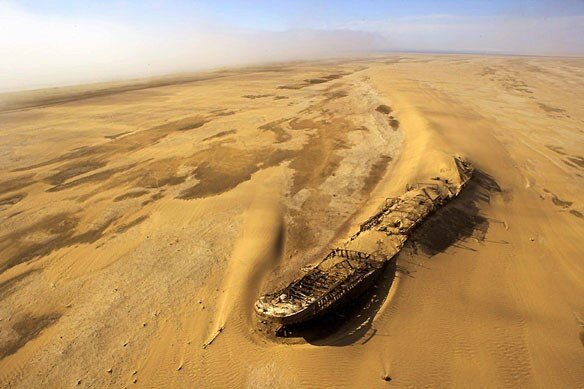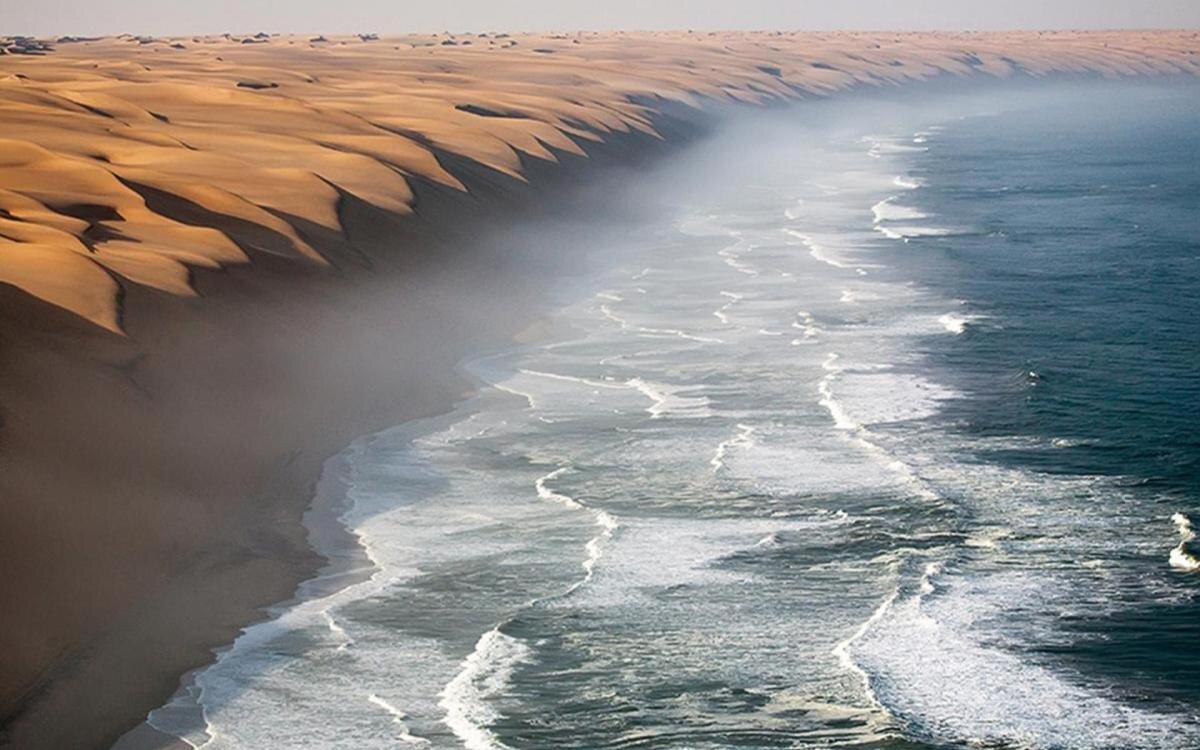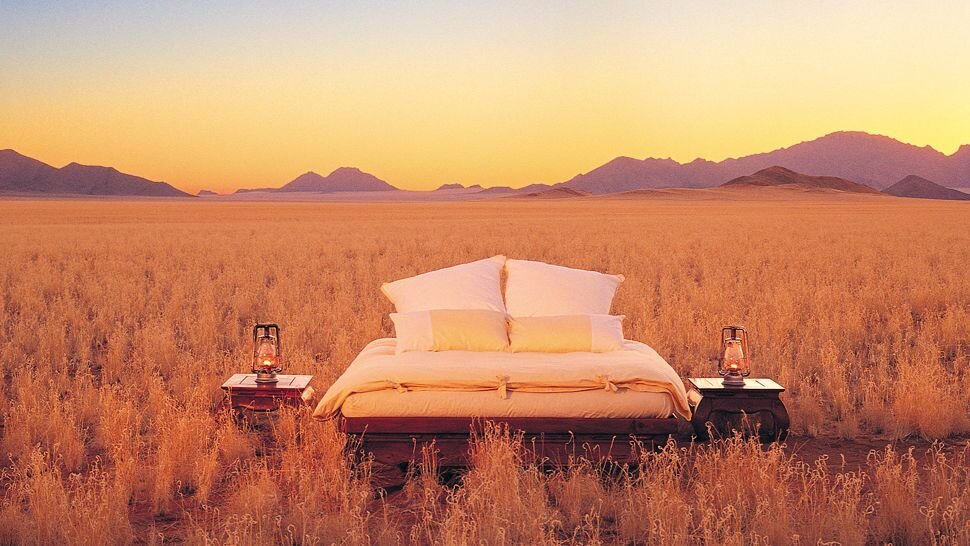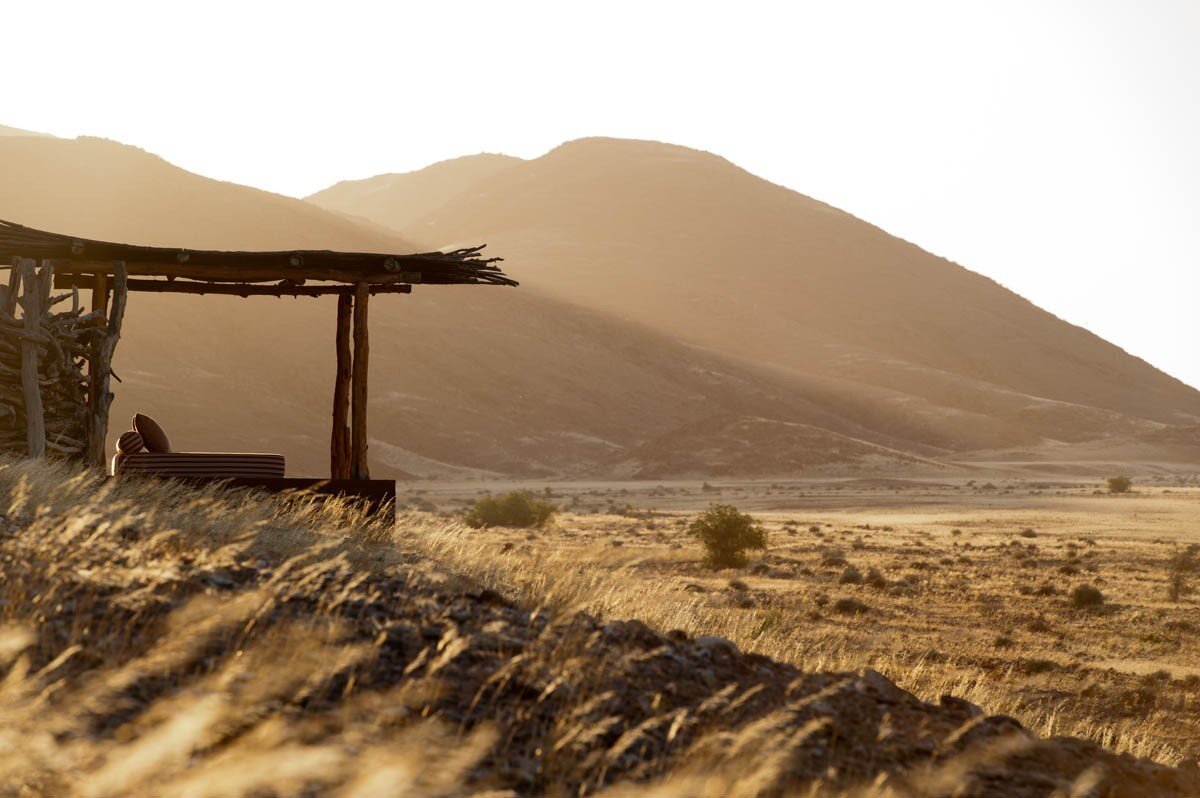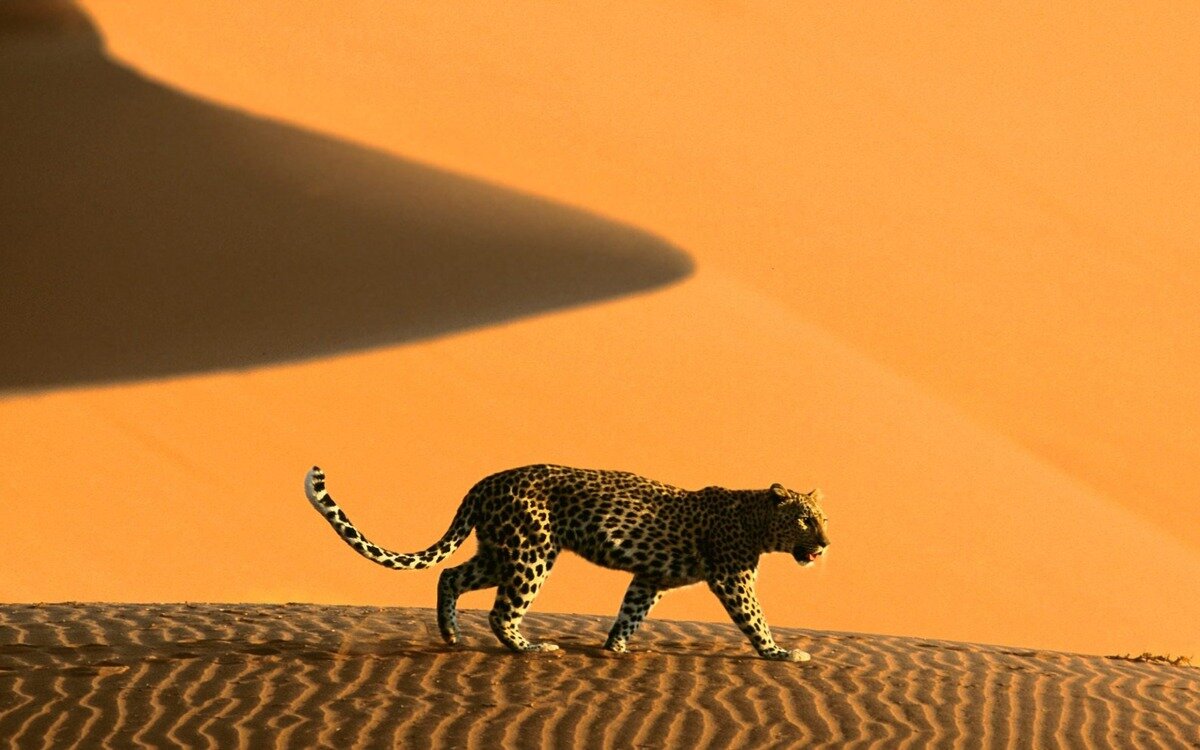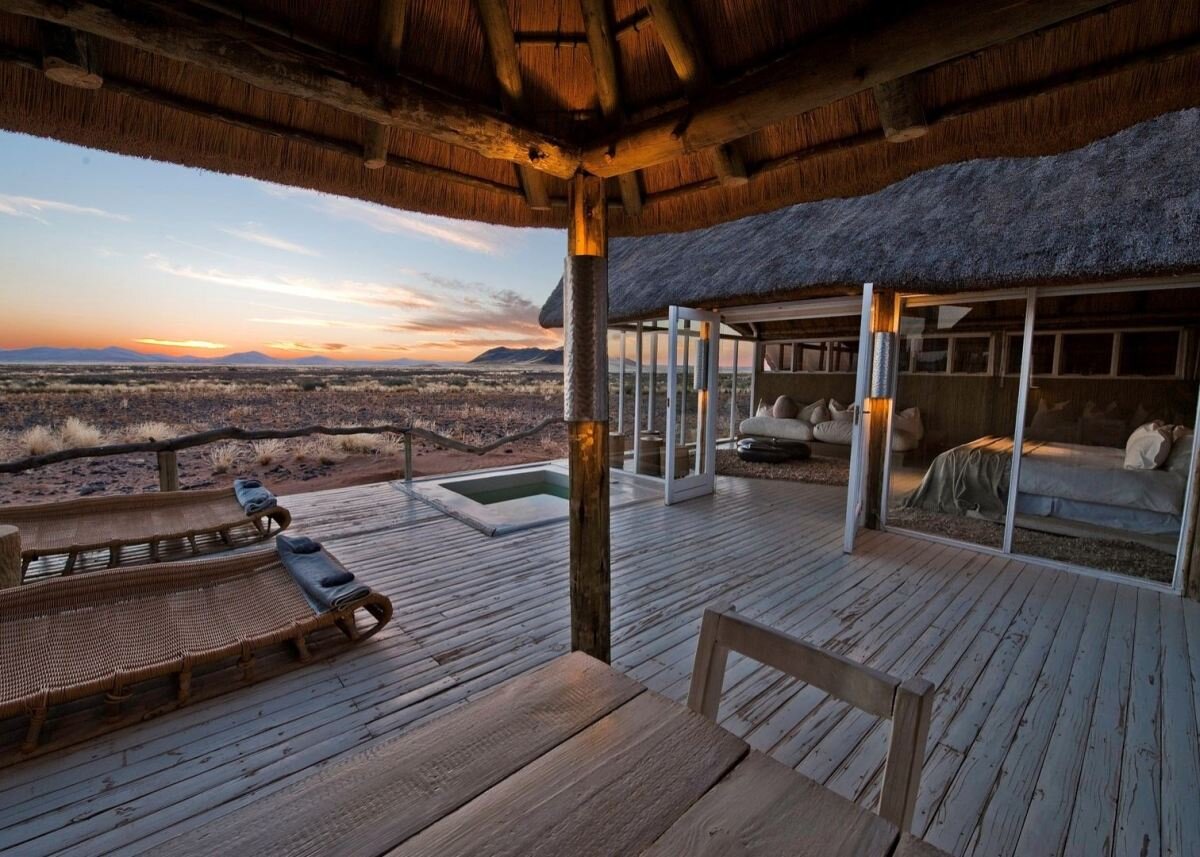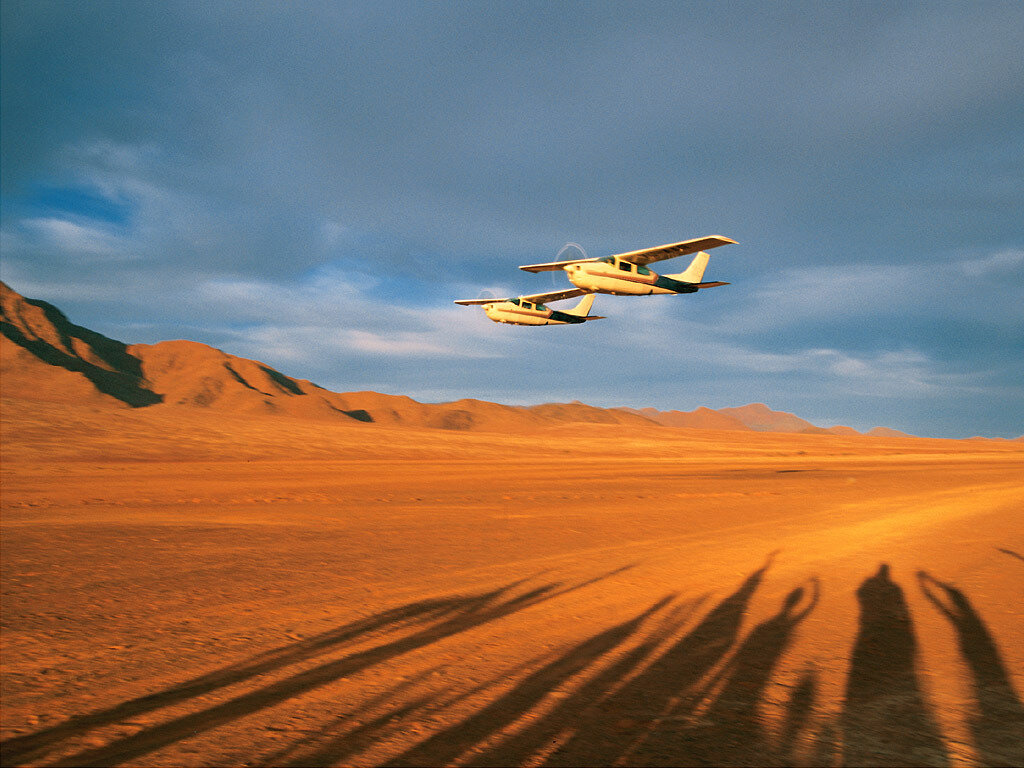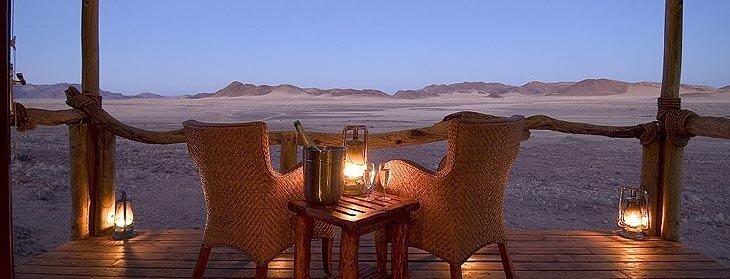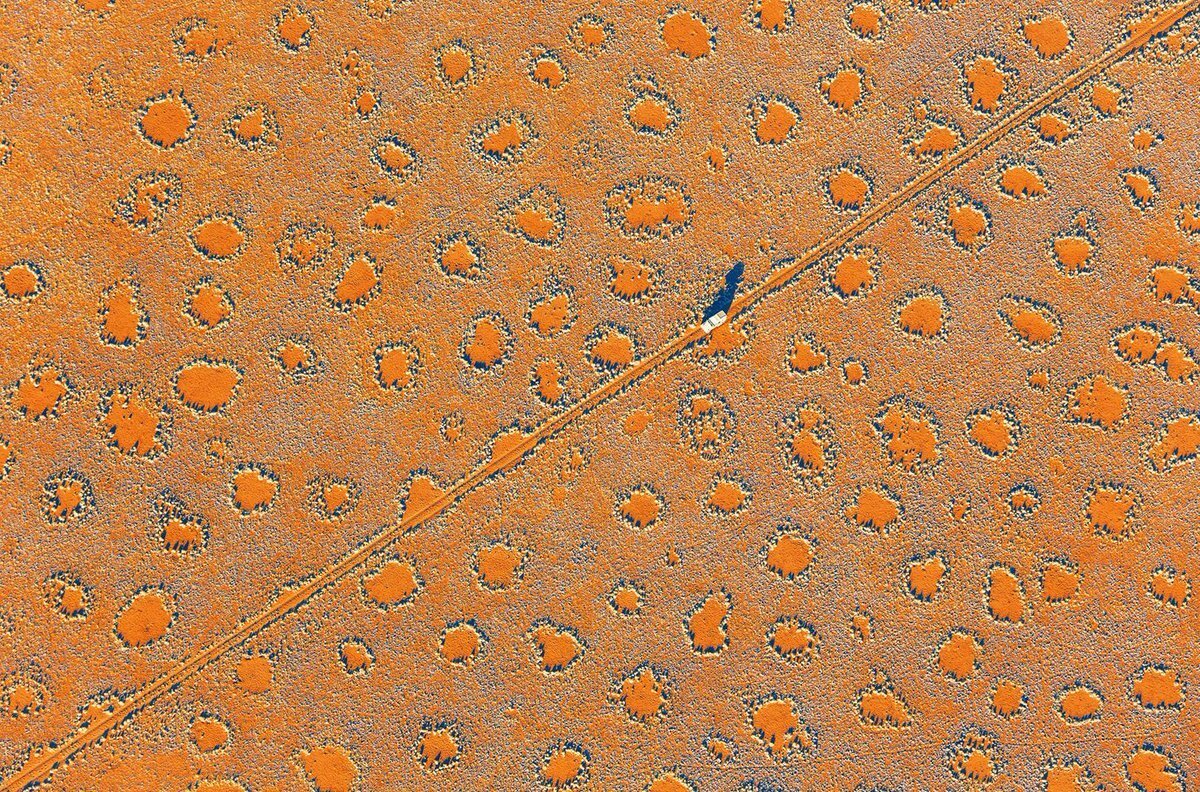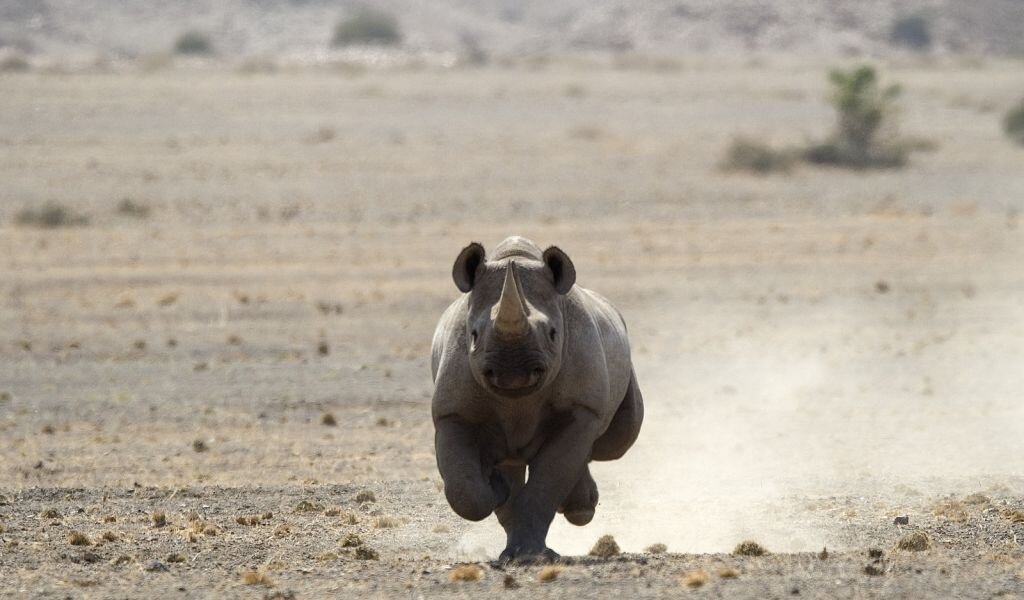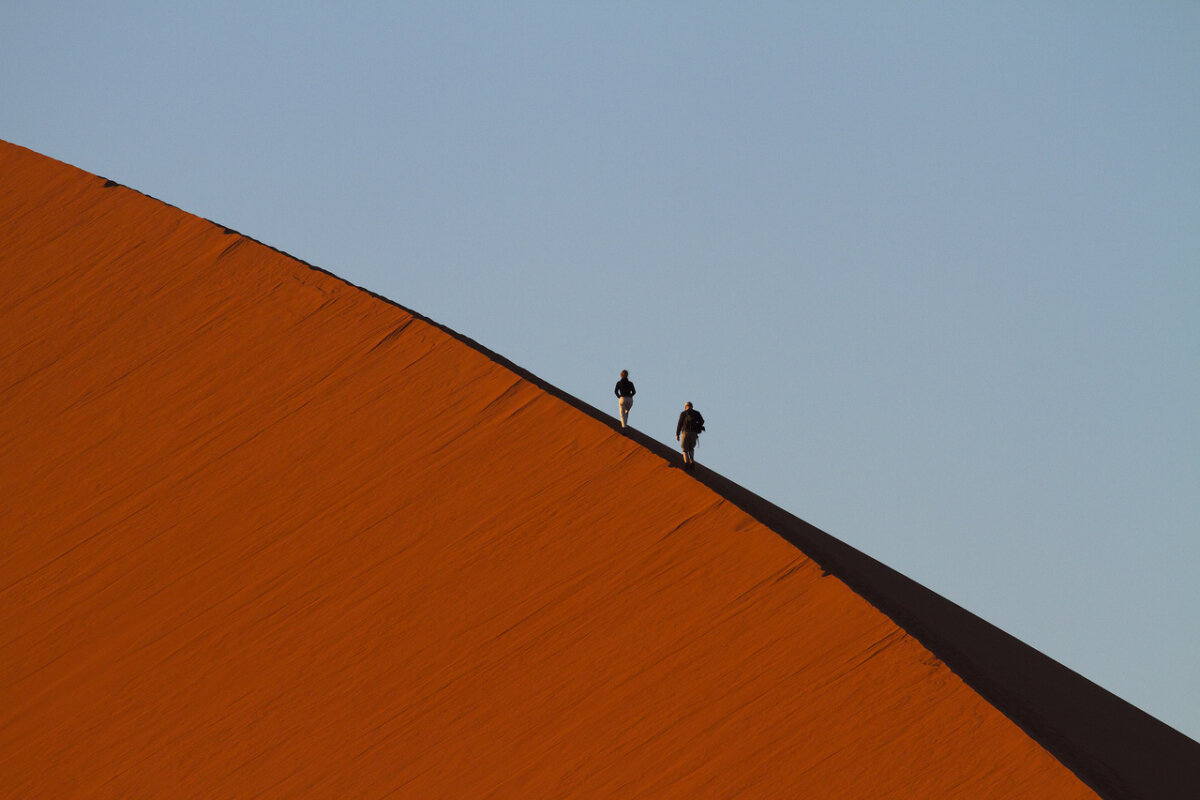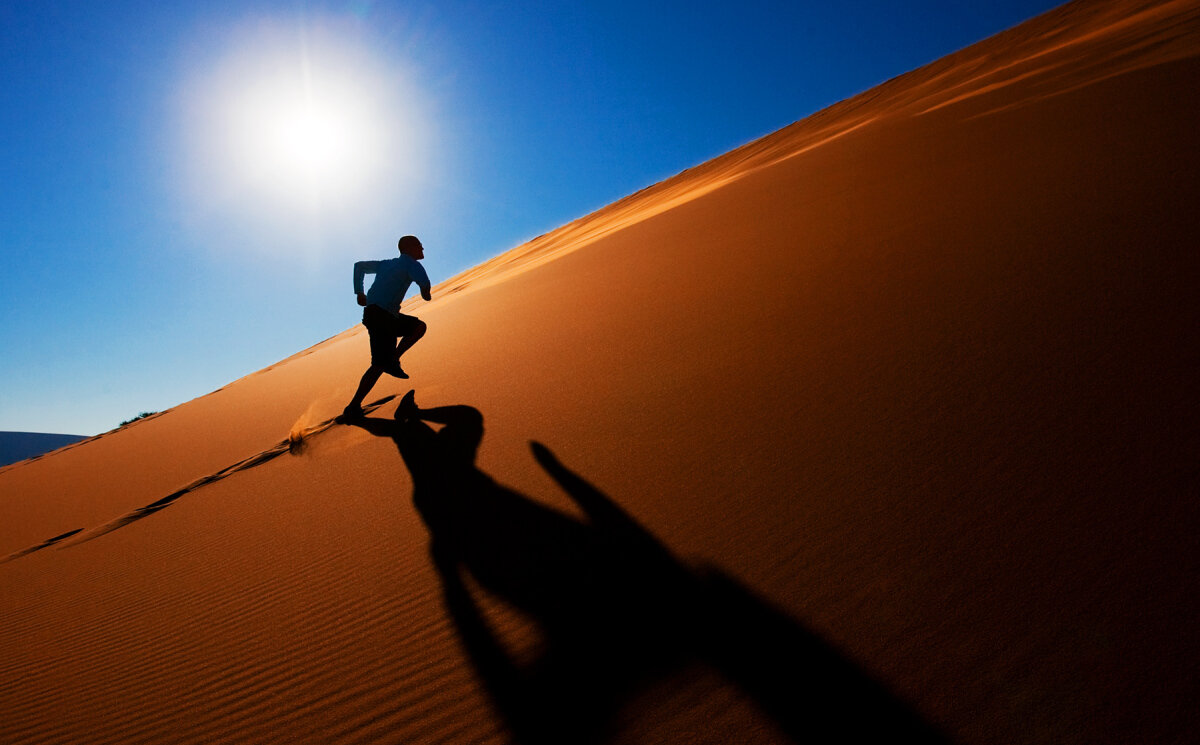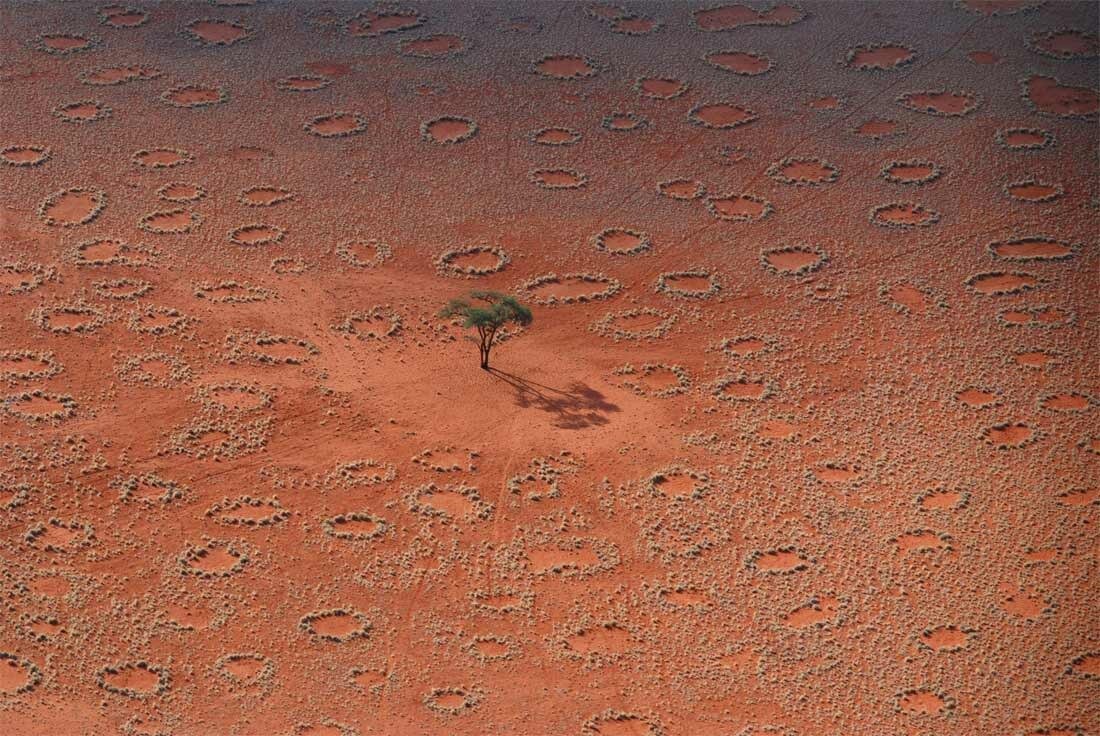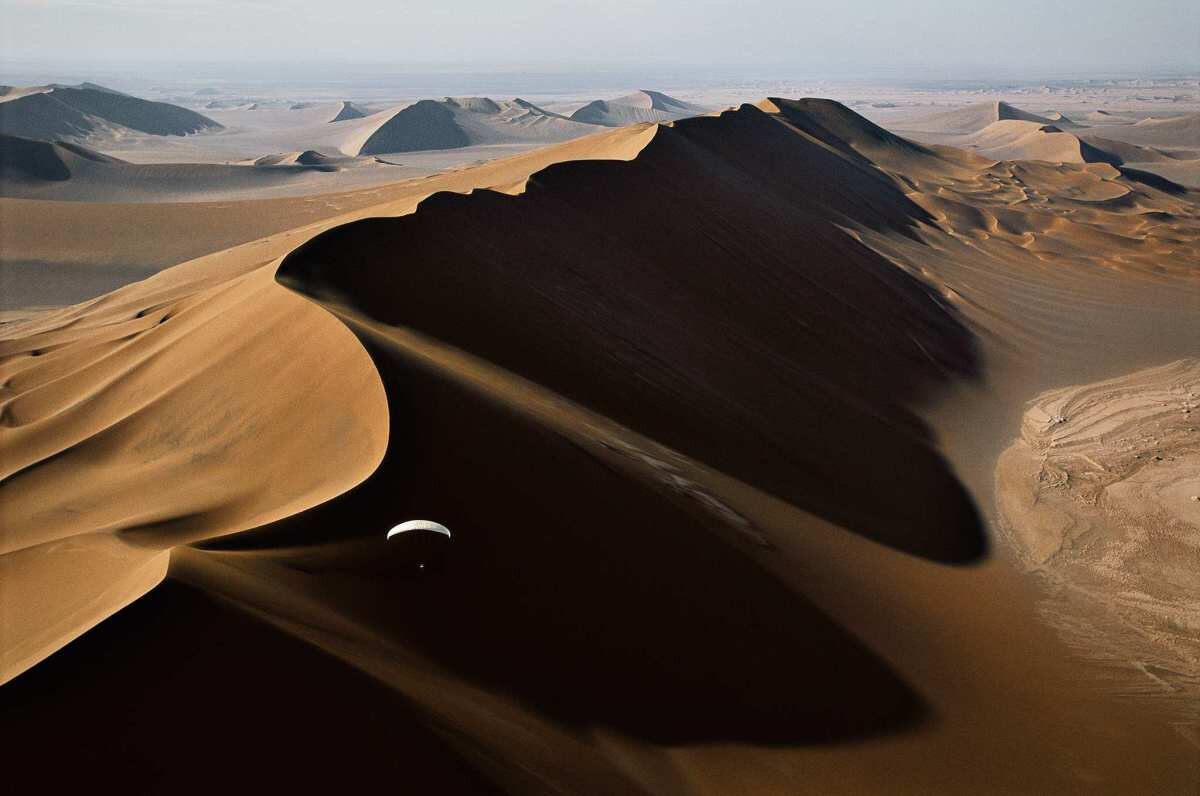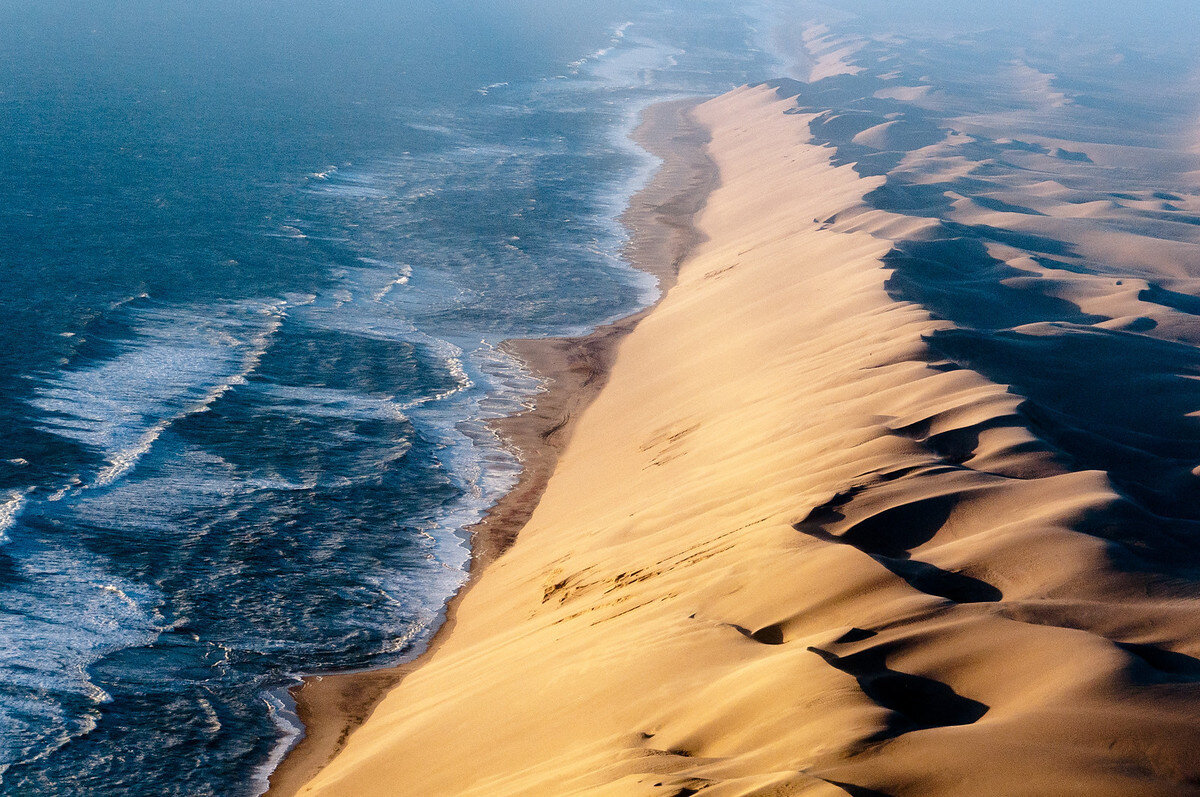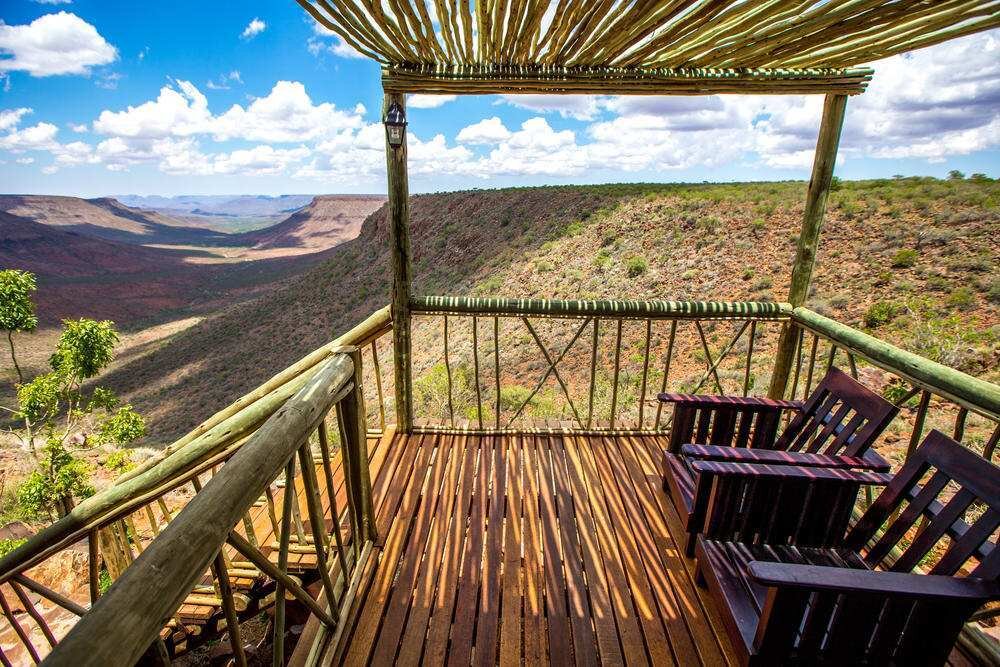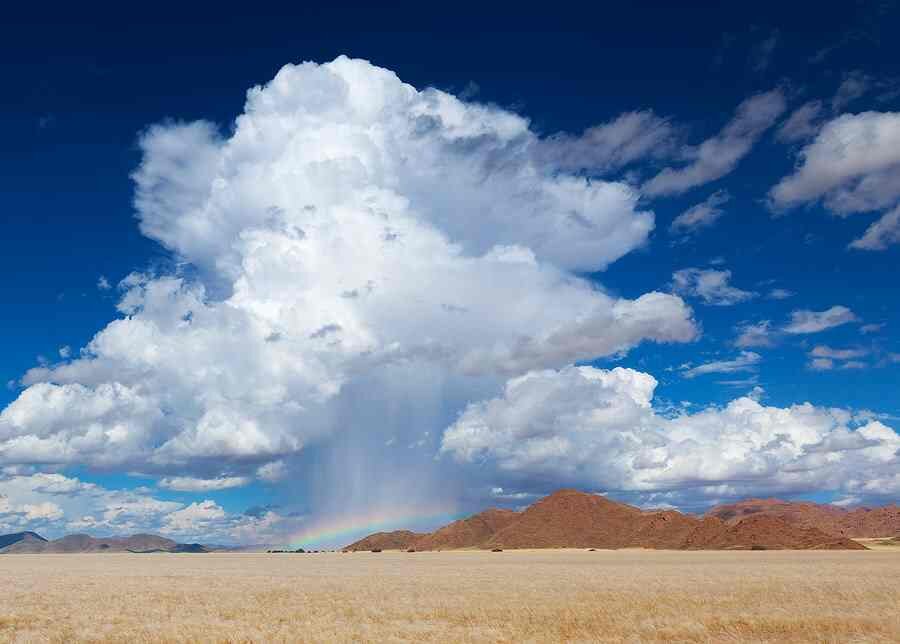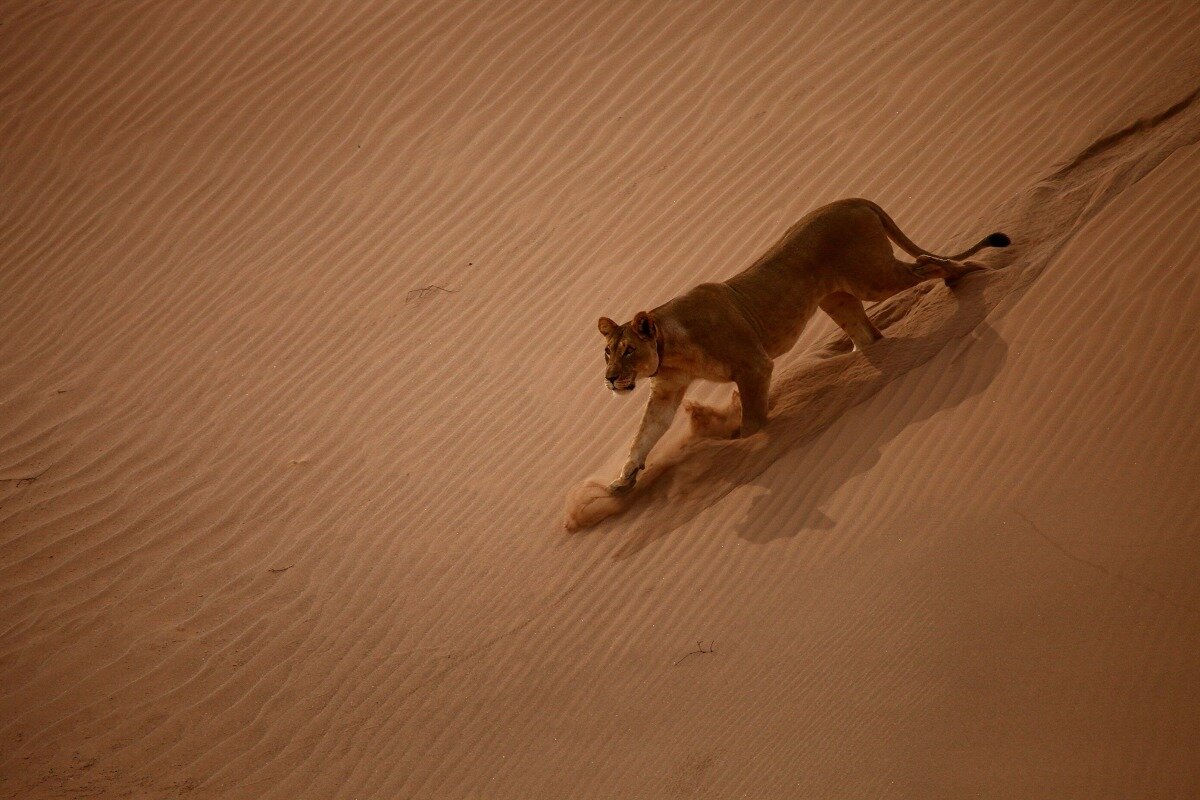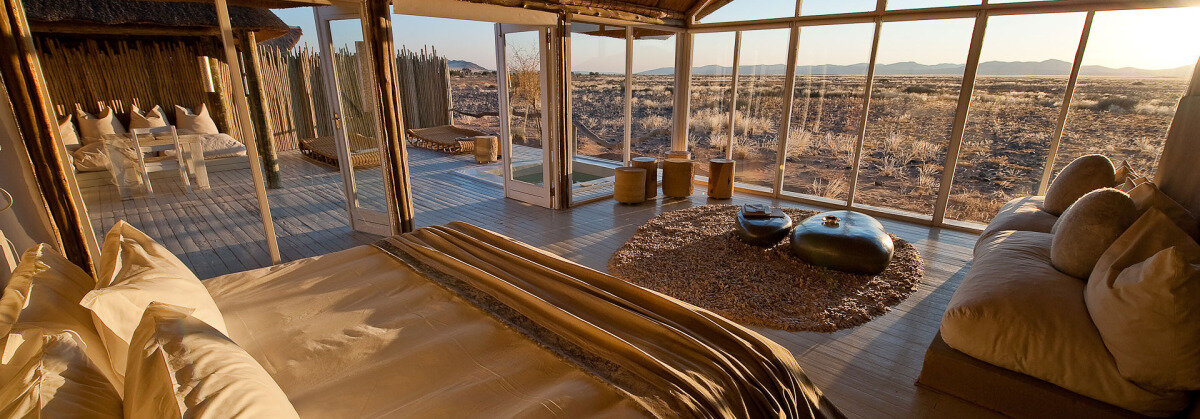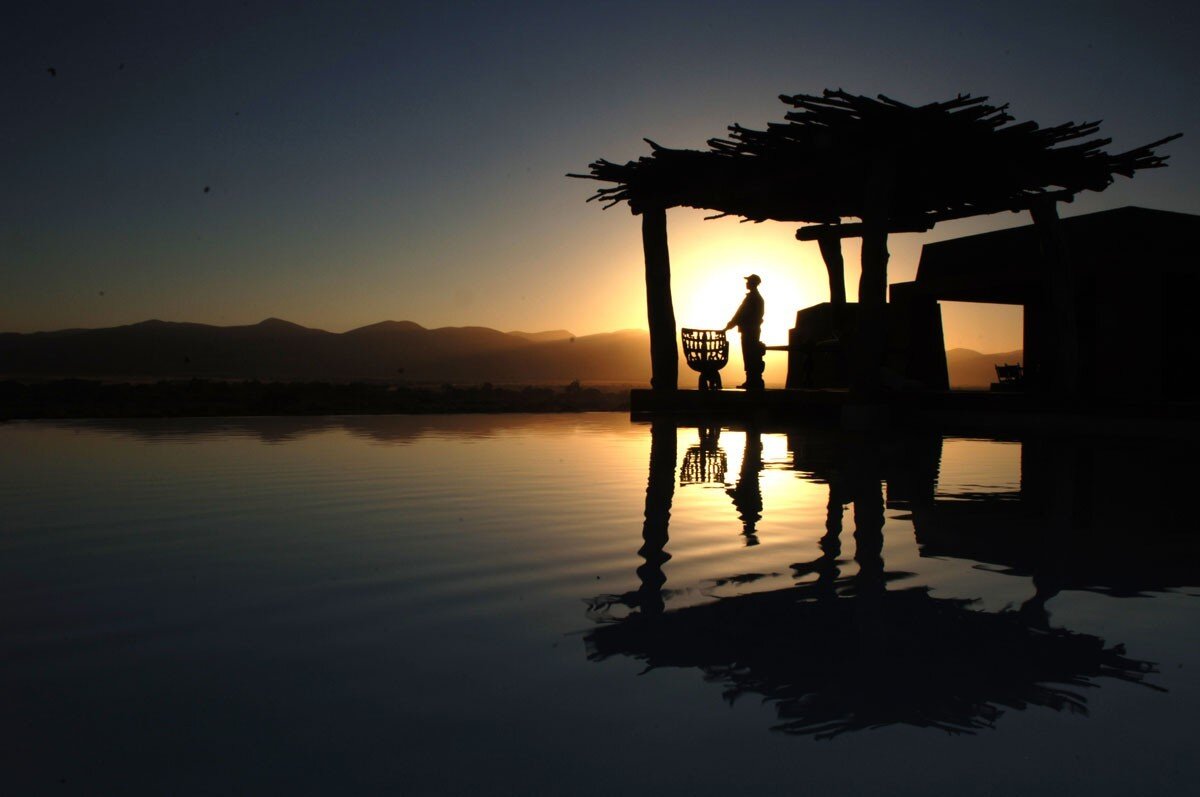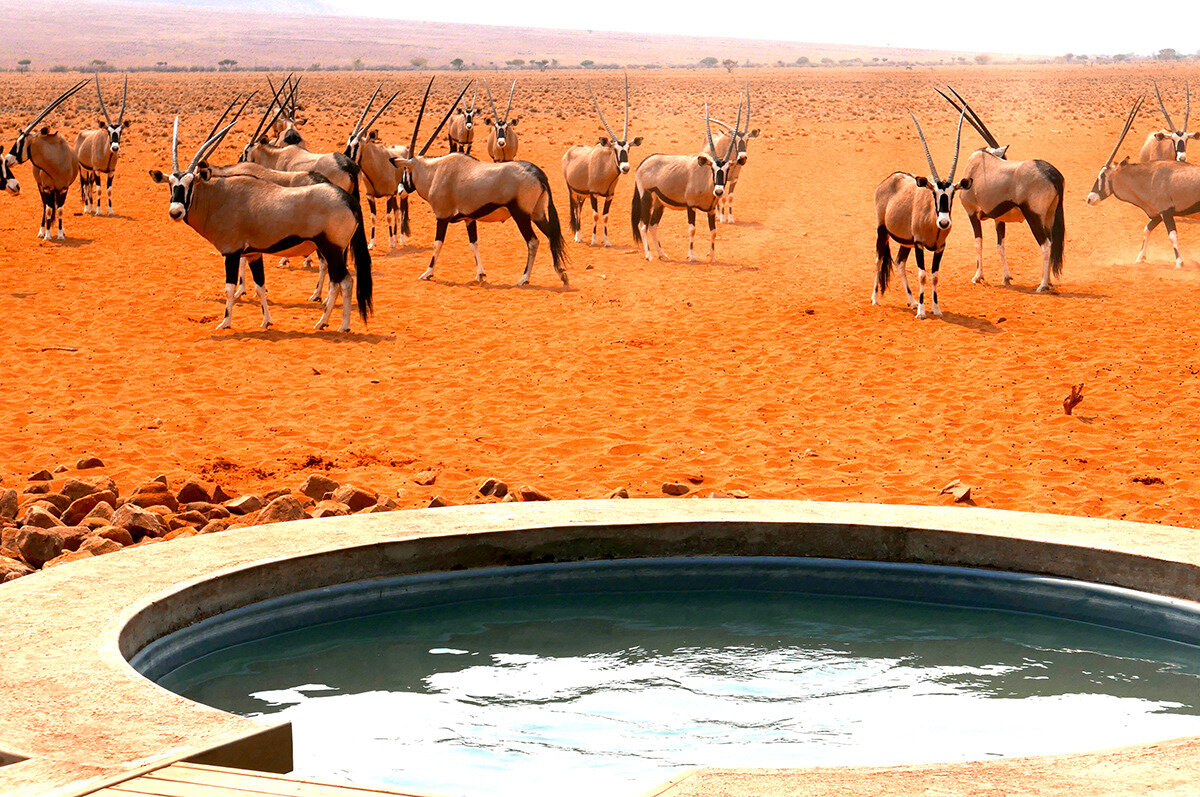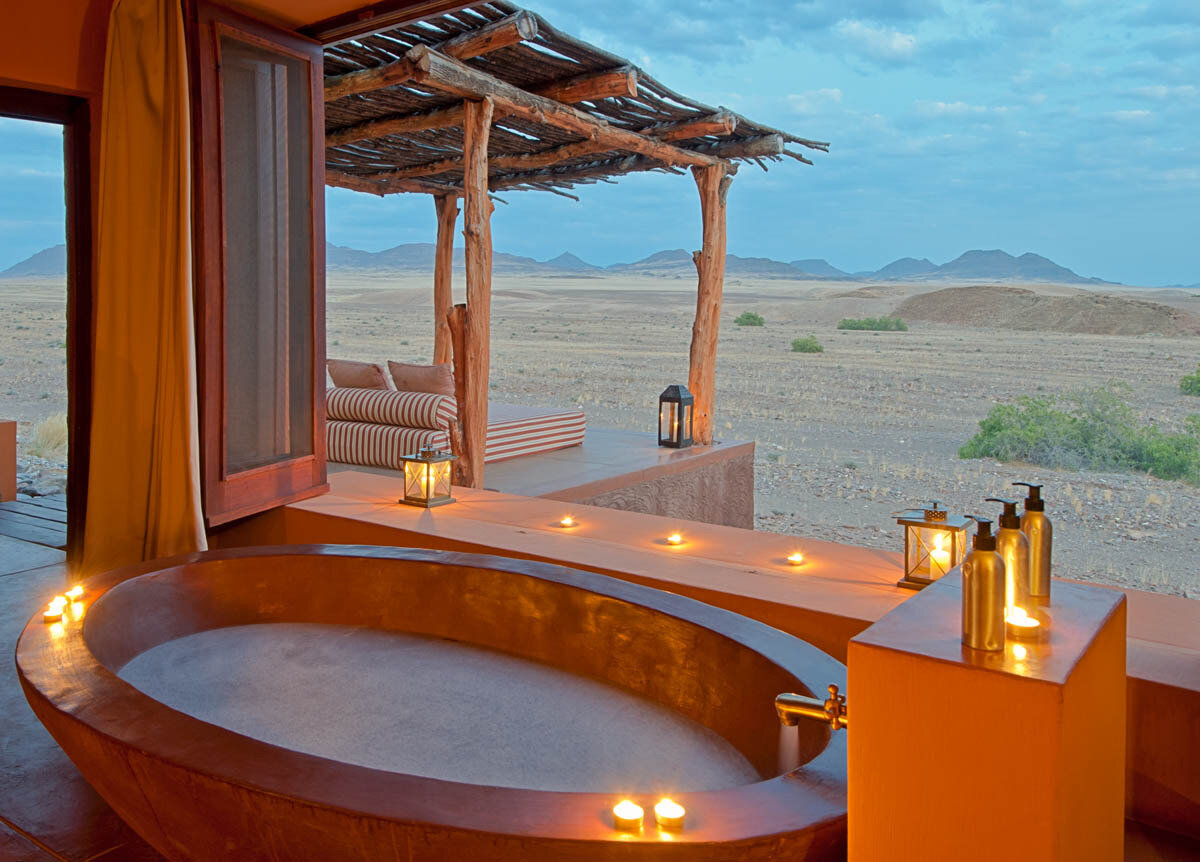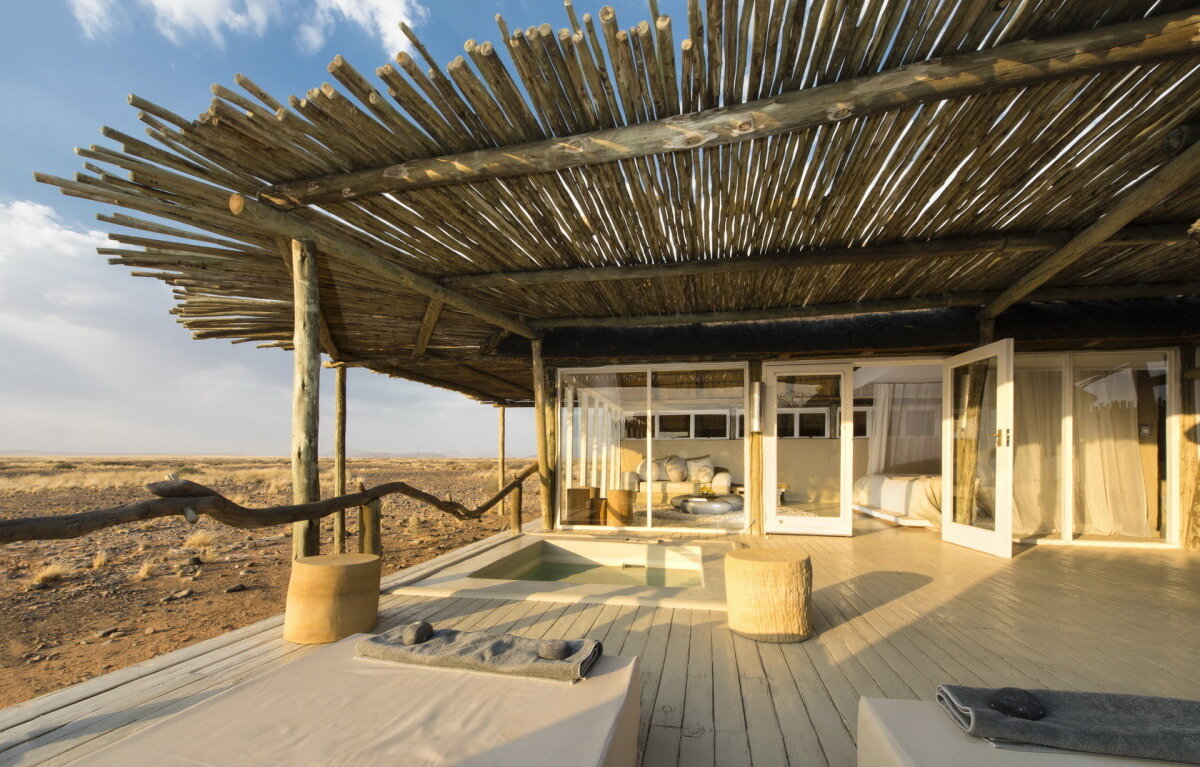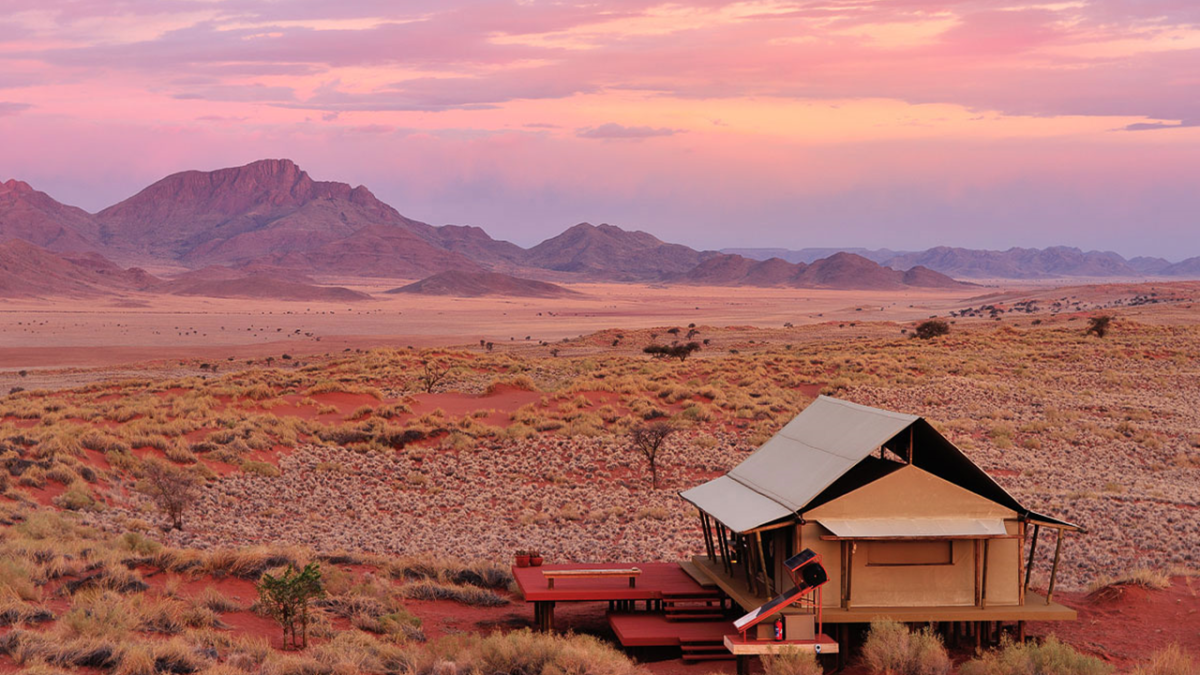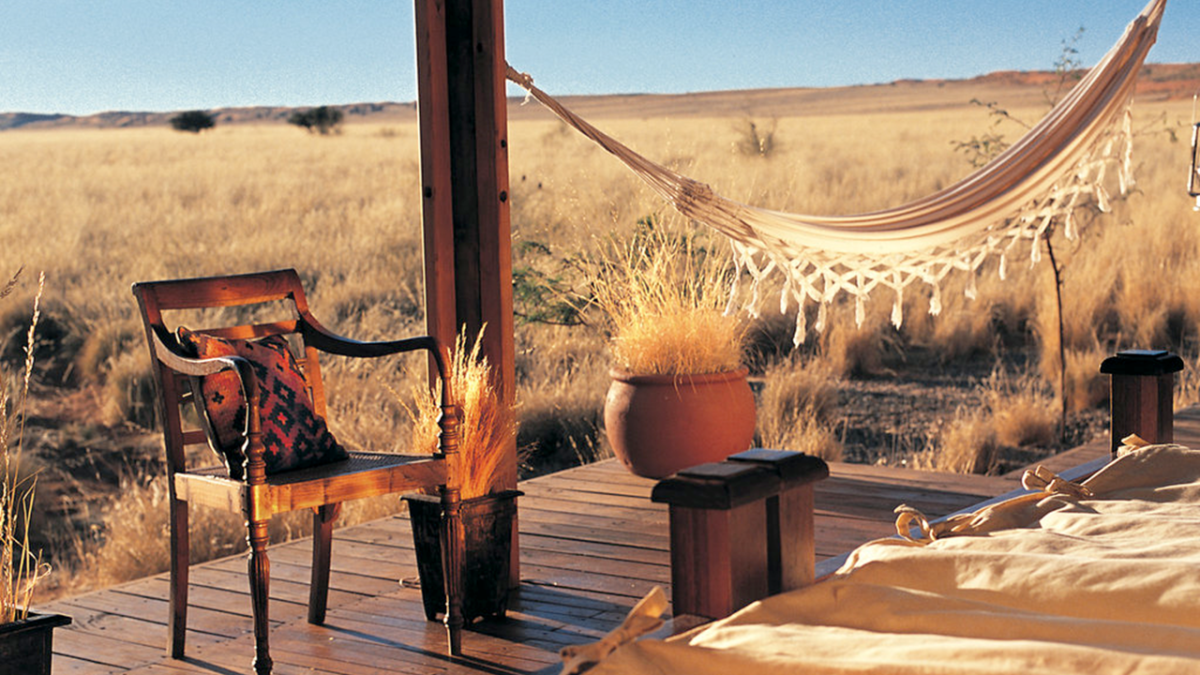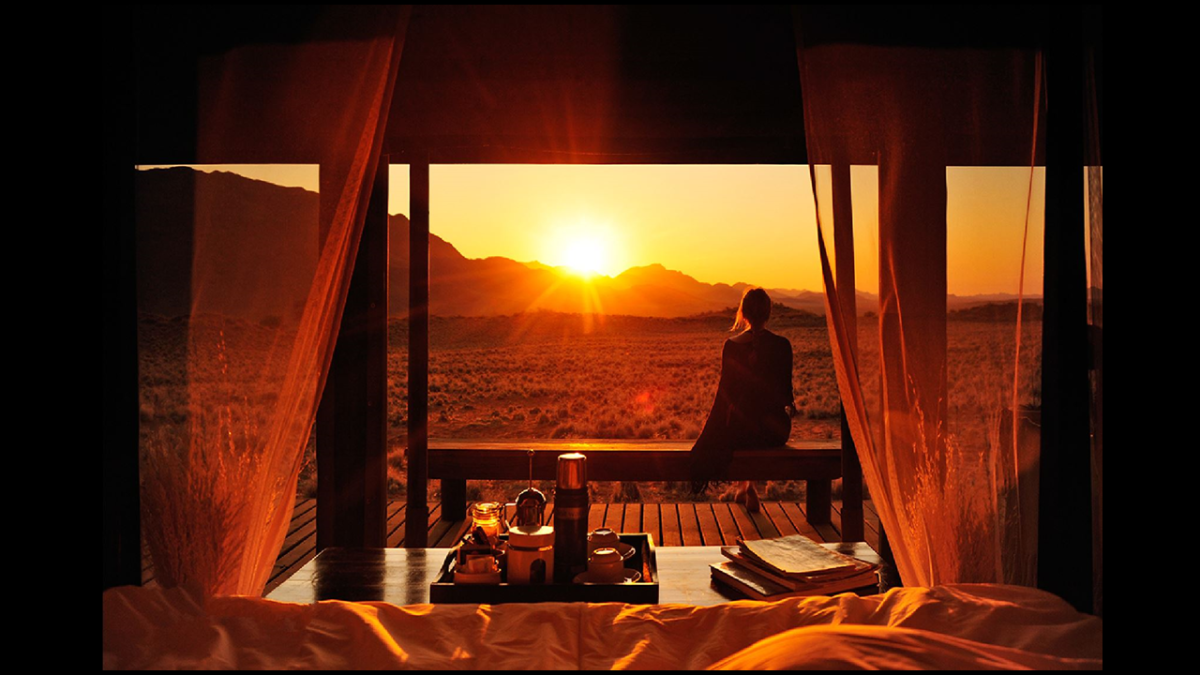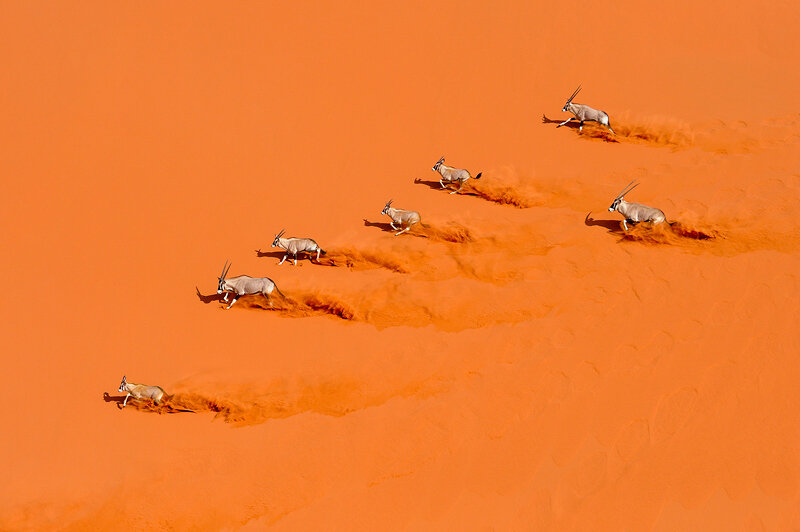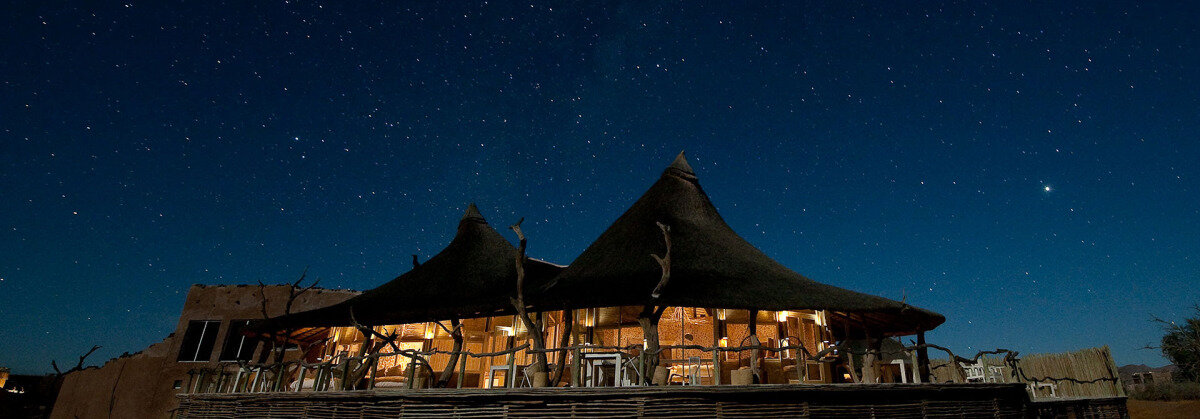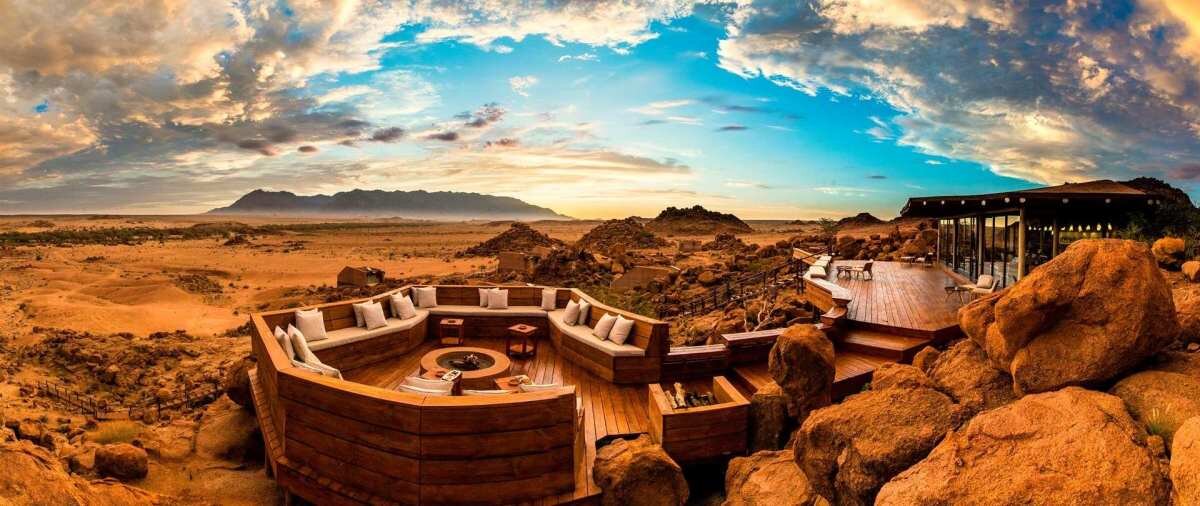THE NAMIBIAN DESERT
& The Skeleton Coast
ROMANCE AND LUXURY
The Namibian desert
“Namibia gets its name from the Namib Desert, a 10 million acre expanse of mostly mountainous terrain, broken up by majestic belts of impossibly red dunes. The Namib also borders the Atlantic Ocean, and forms a far-reaching stretch of misty, mysterious coastline where nomadic lions and seal colonies live amongst remnants of fossils, shipwrecks, and colonial-era ghost towns. Namibia is one of the most sparsely populated countries in the world but it’s the fifth largest country in Africa, covering an area the size of France and England combined. Start by exploring the Skeleton Coast, and soak up the history and folklore surrounding one of Africa’s most treacherous seascapes. Then journey inland to experience the diverse desert wildlife, stunning landscapes and traditional nomadic tribal culture of the magnificent Namib. Luxury lodges and camps in Namibia take advantage of their surrounding landscapes and wide open expanses, offering experiences you won’t have anywhere else, like sleeping out under the starry desert sky or in a shipwreck-inspired chalet on the wild coastline. Namibia was the first country in the world to officially include environmental protection in its constitution and we can arrange special conservation experiences like tracking black rhino or desert lions on foot with a legendary scientist or participate in a solar light drop, bringing the gift of light to a family living without electricity. ”
WHAT WE LOVE
Flying Safaris: By far the best way to traverse Namibia and appreciate its incredibly diverse topography is by air. Small planes fly at low altitude, affording amazing views of the iridescent red desert dunes, the mysterious moon landscape created by the Ugab rock formations, and the shipwrecks and seal colonies that line the Skeleton Coast.
Hiking & Quad Biking: To get a closer sense of the majestic size and scope of the dunes, try to tackle a climb. The dunes can reach close to 1000 feet, but no worries if you don’t feel up to the task. It’s just as much fun to soak up the scarlet-hued scenery from the seat of a quad bike.
Hot Air Balloon Rides: There's no better way to appreciate Sossusvlei—one of the most fascinating landscapes in all of Africa—than from the depths of the sky, riding in a hot air balloon at sunrise. Float gently past gigantic orange dunes, undulating plains and rocky granite mountains, and watch as the interplay of light and shadow creates a kaleidoscope of colors and shapes. Witnessing such spectacular scenery from the deafening silence of a hot air bound balloon is an experience not soon forgotten.
Get Hands on With a Dinosaur: Desert Rhino Camp occupies a minimalist million-acre stretch of rocky hills, grassy plains and scrubby vegetation, and is also home to the largest free roaming black rhino population in Africa. Desert Rhino Camp operates in collaboration with Save the Rhino Trust (SRT), an organization that has been instrumental in preserving this extremely rare and endangered species. The Camp offers a variety of interactive activities and experiences to engage with the Rhinos – from tracking them on foot to following the herd on a quad bike – and all exploration takes place within one of the most unique ecosystems on the continent.
Big Cats Conservation: Visit the Okonjima Nature Preserve, home to the outstanding Africat Foundation, to track the big cats, and then some. Africat has been offering wildlife conservation and educational experiences for more than two decades, and at Okonjima you can safely track leopards, hyenas, rehabilitated cheetahs and wild dogs on foot or by car. Okonjima also offers special nocturnal drives to catch the wildlife after hours, hanging out in their natural habitat.
Herding with Nomadic Tribes: Venture into the scenic Hoarusib Valley to herd cattle and sheep with settlements of the desert-dwelling Himba Tribe, one of the oldest and most remote nomadic communities in Africa. The Himba here still live according to traditional tribal norms, and adorn themselves in body paint, jewelry and extravagant head dresses constructed from the region’s signature red desert clay. The Himba also live without electricity, so participate in a Luci Solar Light Drop—one of Epic Road’s most special signature experiences—and give the gift of light to a community in need.
Boating on the Kunene River: Go bird watching on the Kunene River, which flows along Namibia’s western border with Angola. Observe indigenous desert aquatic species in their natural habitat – and maybe even meet a crocodile or two.
Track Lions: The super adventurous can join an expedition with legendary scientist and wildlife conservationist Dr. Philip Stander as he tracks desert-adapted rogue lions on foot through their natural habitat. The beauty of this itinerary is that there is none: Lions are lords of their environments, and the animals set the pace. Tracking takes place day or night—wherever it is the pride may roam—and the distance they can cover is vast. But the privilege of observing the discreet beast in its very own lair, and to participate first-hand in the work of one of the world’s most respected conservations, is unprecedented.
REST & REJUVENATE
After a full day of adventure, hiking and wildlife tracking, a little relaxation is in order. Luxury lodging in Namibia often consists of fully equipped private camps, many of which offer guests a second option of sleeping in high comfort outdoors, surrounded by gorgeous natural landscape, under a star-filled African sky – the ultimate recipe for romance.
Serra Cafema: One of the most remote camps in all of Africa, Serra Cafema is located in the extreme northwest corner of Namibia, on a lush stretch of the Kunene River bordering Angola. This river in the middle of the desert setting makes Serra Cafema an ultra oasis in the midst of an otherwise rugged landscape, and the majesty of the surrounding mountain range—from which the camp gets its name—underscores its sense of intimacy and isolation. Experience a range of thrilling activities here, include quad biking, boat rides, and incredible and authentic interactions with the local Himba tribe. Serra Cafema is reachable only by light aircraft, and the peace and utter sense of calm guests experience upon arrival makes the trip more than worth it.
Little Kulala: One of the most beautiful spots to stay in Namibia, due to its high organic design, understated, and undeniably romantic setting. Situated on the Kuala Wilderness Reserve, considered the gateway to the Namib’s “Sand Sea”, Little Kuala consists of 11 climate-controlled thatched villas, nestled into the natural desert landscape, each with an open Starbed on the rooftop—in addition to the master bed inside your villa—that allows for expansive stargazing well into the night: serene elegance under the painted starry sky. There is no better location for exploring Sossusvlei, considered to be one of Namibia’s most spectacular sights.
Wolwedans: Wolwedans is a collection of solar powered luxury camps situated in the NamibRand Nature Reserve, a wildlife conversation area in the southern part of the Namib Desert. At Wolwedans, classic canvas sided tents sit atop wooden decks built to maximize the amazing views. The main lodge has a pool suspended above the sand, a comfortable lounge with a fireplace and library, wine cellar, and on-call masseuse. A Mountain View Suite is separate and secluded with an outdoor starbed, a great option for honeymooners. The local desert-adapted flora and fauna can be explored on foot or on horseback, on a scenic drive or flight on light aircraft, or for something even more memorable float over the red lunar landscapes in a hot air balloon and celebrate afterwards with a champagne breakfast.
AndBeyond Sossusvlei Desert Lodge: Set to reopen in October 2019 after a renovation, Sossusvlei Desert Lodge has floor to ceiling windows opening up to the beautiful way natural light hits the otherworldly terrain outside. have The 10 luxurious, private suites offer every opportunity to connect with the outdoors, from outdoor showers to skylights positioned over the beds for stargazing. Space and silence are a luxury here, but the amenities are wonderful too - elevated gym with amazing views, for example, and an onsite observatory and resident astronomer. Explore the terrain with guided nature walks, fatbiking, excursions to Sossusvlei and Deadvlei, and mind-blowing hot air balloon flights at sunrise.
Rhino Desert Lodge: After a day spent tracking pre-historic beasts, Rhino Desert Camp offers high-end accommodation at a tented lodge that opens up onto panoramic vistas of the beautifully stark desert landscape. Guests have access to a fully equipped shared lounge, and evening meals are taken collectively around the fire pit, allowing for relaxed socializing and swapping of stories about the day’s adventures in the desert.
Hoanib Valley Camp: Immerse yourself in the wilds of the Namib Desert at Hoanib Valley Camp, set at the foot of a dramatic cliff in one of Namibia’s most remote environments that is also chock full of wildlife like desert-adapted elephant, lion, giraffe, mountain zebra, and rhino. The landscape is so unusual that it’s truly otherworldly – undulating dunes, dry riverbeds, and jagged mountains. In this wild environment the camp itself feels especially intimate, with a warm and friendly staff and just six luxury tents that blend perfectly into the rugged terrain. After a few days at Hoanib Vallery we generally recommend spending a few nights seeing the incredible skeleton coast at sister property Shipwreck Lodge.
Hoanib Skeleton Coast: A gorgeous property only accessible by light aircraft and featuring just 8 suites, the Hoanib Skeleton Coast Camp is African exclusivity and remoteness at its best. This open-aired property creates the simultaneous sensation of indoor luxury and outdoor splendor. Relax from your stylish bedroom and shaded outdoor deck and revel in the scenic beauty, flanked to the east and west by rugged hills and located at the intersection of two tributaries of the Hoanib River, the camp looks out over a stunning landscape. This vast landscape offers unparalleled views of Namibia's distinctive desert-adapted wildlife, unexpected oases and huge sand dunes. Special experiences here include scenic flights to the coast and tracking black rhino on foot with researchers. You will, without a doubt, see elephants, giraffes, lions, springbok and countless seal colonies - an extraordinary experience to remember.
Shipwreck Lodge: Shipwreck lodge is truly one-of-a-kind, with eight solar powered chalets and a central lounge and restaurant all designed with dramatic architectural details that mimic the centuries old shipwrecks the lodge takes its name from. As the only property situated within walking distance of the misty coastline, the isolation and intense coastal fog are part of the experience. This may not be an experience for everyone, but we highly recommended it for the type of traveler who can appreciate the somewhat spooky and strange adventure only the Skeleton Coast has to offer. Some of our favorite experiences include quadbiking, sandboarding, and sunrise breakfasts on the sand dunes, sundowners and walking along the beach, game drives to see desert-adapted wildlife, and visits to the Mowe Bay seal colony and the Clay Castles. It would be impossible to replicate the experience here anywhere else on the planet.
Sorris Sorris Lodge: In Damaraland the landscape is rocky and rugged, and Sorris Sorris lodge is perfectly situated, hugging the rocky terrain, with sweeping views from the breathtaking pool – one of our absolute favorites - and the open air main lodge. The vantage point is truly a highlight of staying at Sorris Sorris, with surroundings so remarkable that you could simply sit on the deck all day and soak in in your surroundings. When you do venture out, go in search of desert-adapted elephants, zebra, oryx and giraffe in the dry Ugab riverbed or venture into the community for an interesting cultural experience. The food here is also top notch. We recommend only visiting during Namibia’s winter as the way the room is designed makes it retain the heat.
Omaanda: Located just outside of Windhoek, Omaanda is in an unusual setting where a safari experience is possible just half an hour from the international airport. While your adventure in Namibia will surely take you further afield, Omaanda is the perfect place to spend your first night in Namibia if travel itinerary calls for it. The incredible serene pool and a relaxing massage are an excellent way to prepare you for your magical journey ahead, or at the end of a trip, Omaanda is an excellent place for travelers who need a night here to decompress and reflect on the memories of wildlife encounters and moody landscapes before heading back to the real world.
The Olive Exclusive: Located in the middle of Windhoek, The Olive Exclusive is an urban oasis with a contemporary design. The Olive is an elegant and serene place to relax and recuperate after a long flight and prepare to embark on you adventures in Namibia’s more remote areas. A city hotel with an in-house spa and restaurant, and six suites each with their own private plunge pool, fireplace, lounge and dining area, this is an excellent place for a relaxed transition on your arrival in Namibia.
WHAT TO KNOW
There really is no bad time of year to visit Namibia. The country is primarily desert, and as a result there is little to no rainfall year to year. The exception is the northernmost regions along the Kunene River, which has a light to average rainy season from December through March. For the most part, however, the climate is classic desert: dry and hot during the day, much cooler at night, and becoming more temperate the closer you get to the coast.
Namibia does not require a visa for most travelers who are staying less than 90 days, but we recommend checking the Namibia High Commission website for more detailed information.


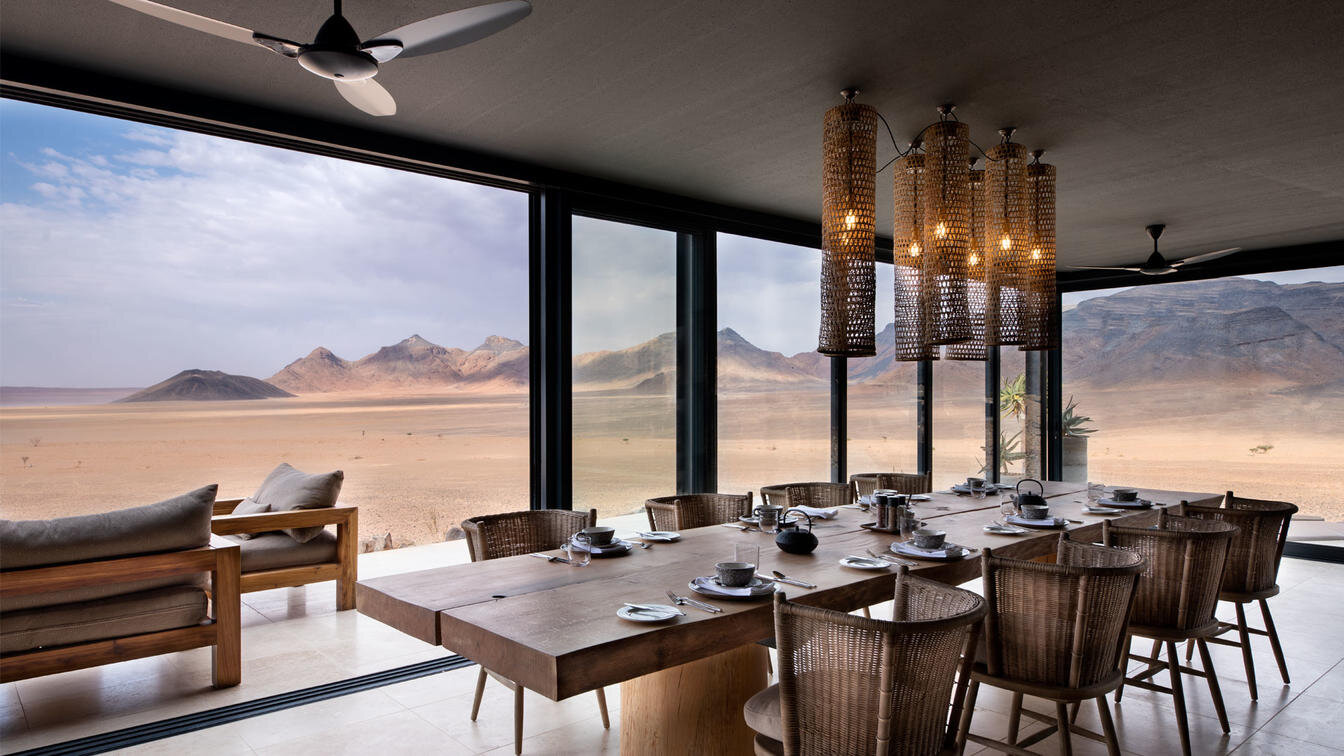
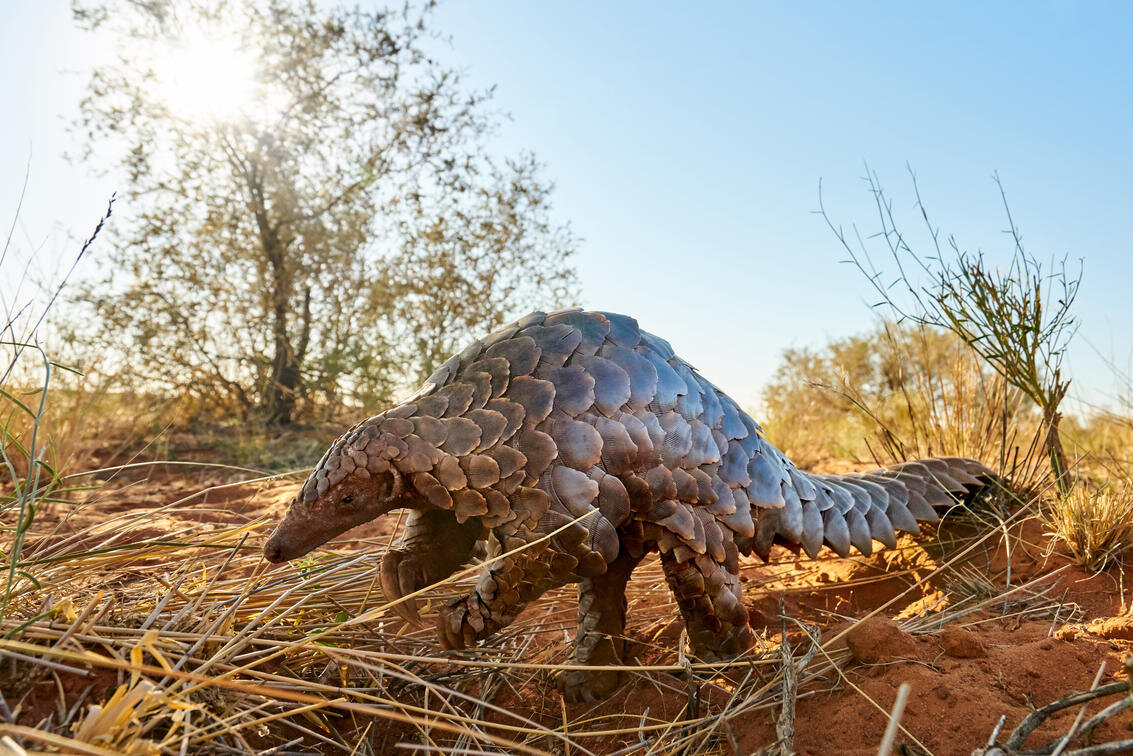

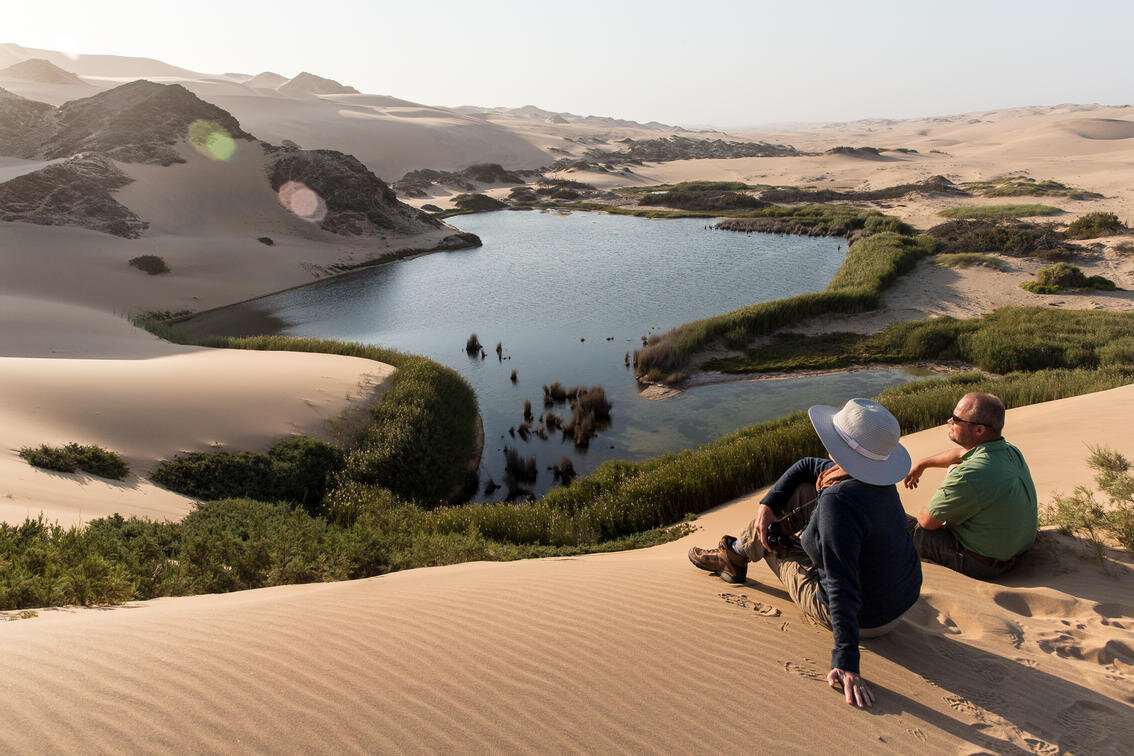
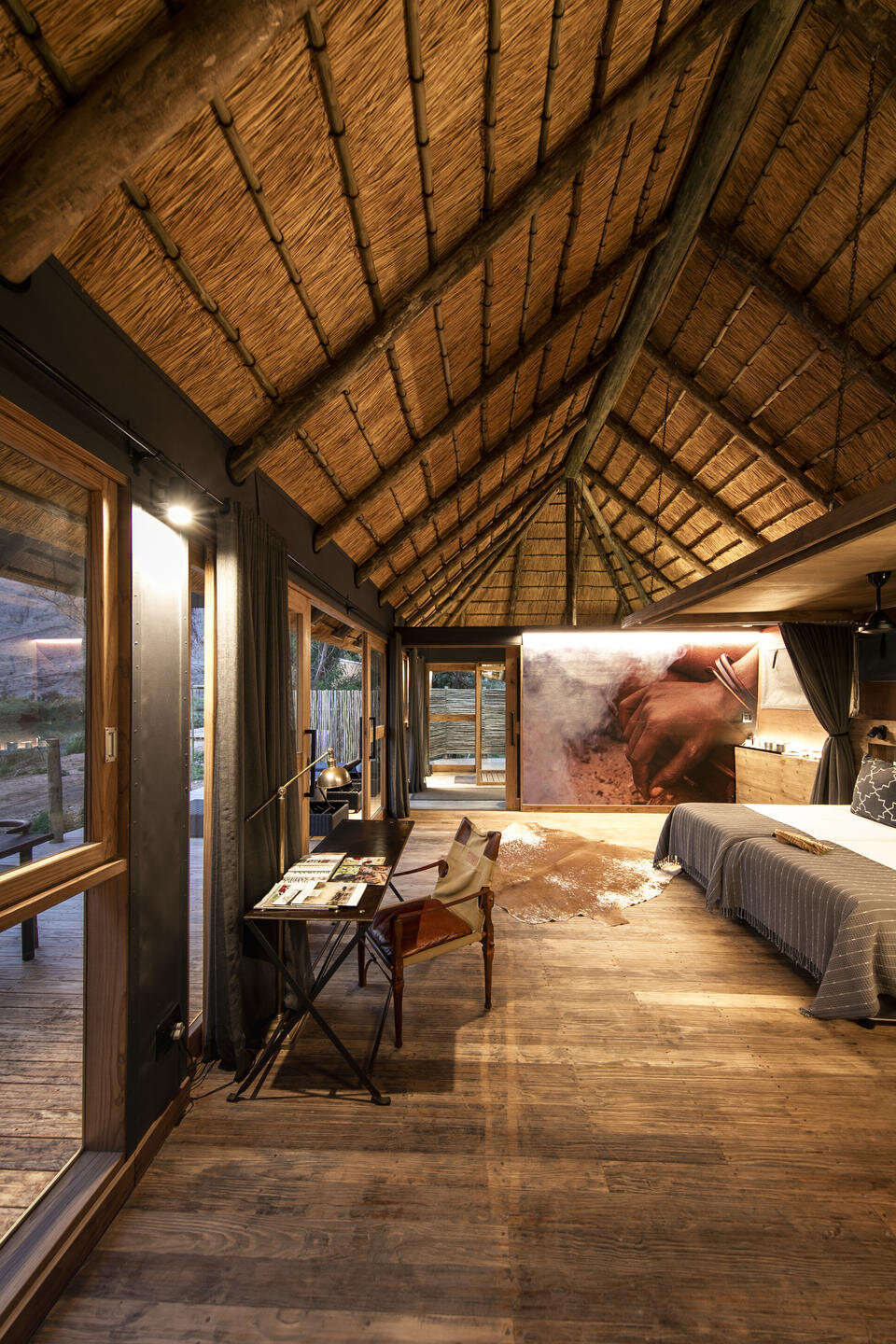
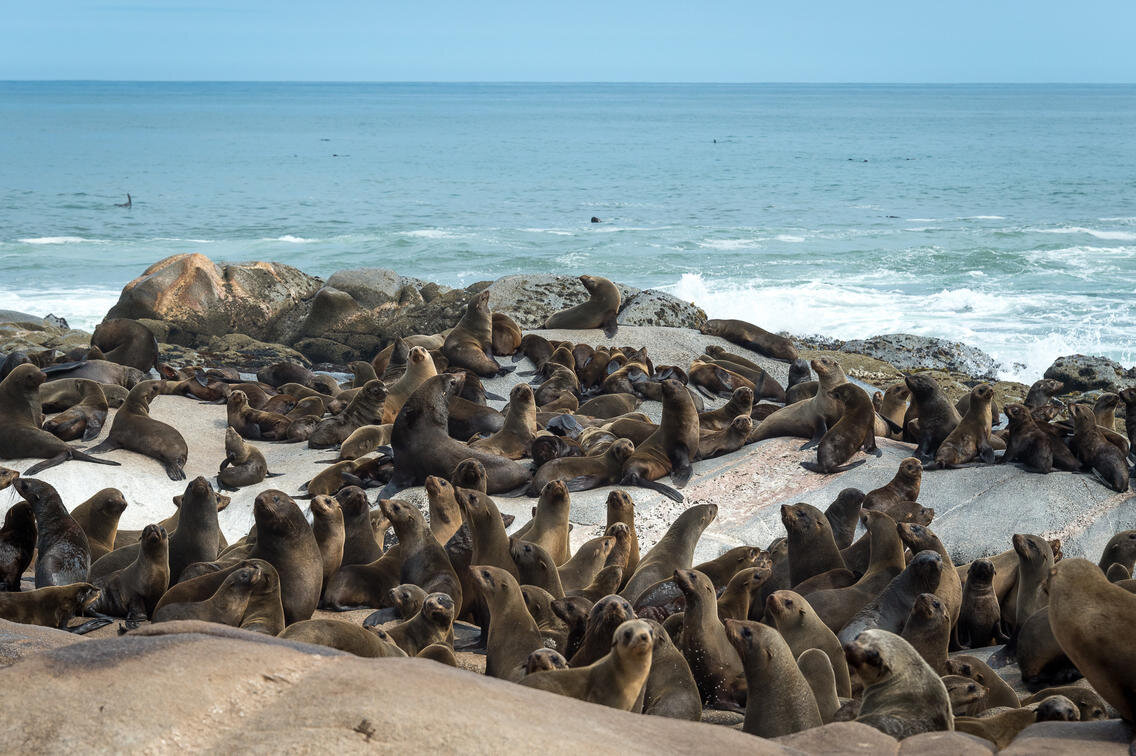
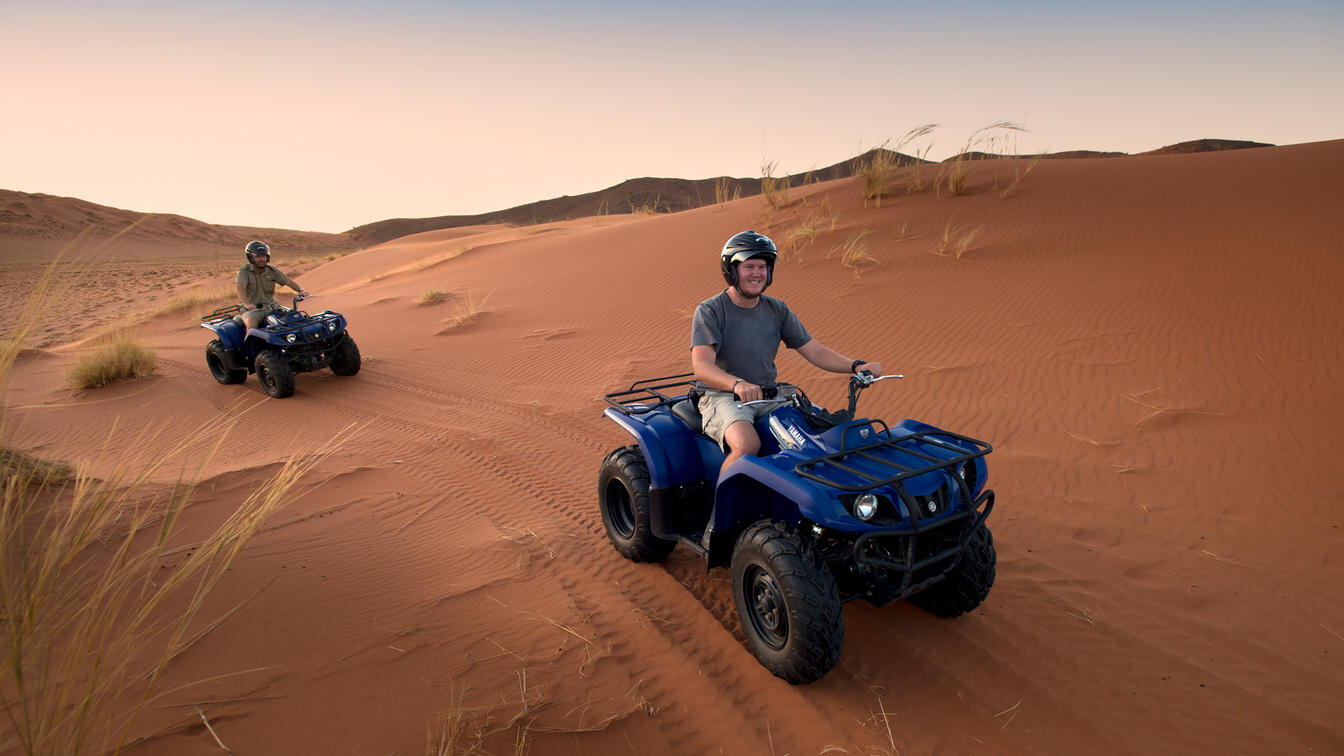
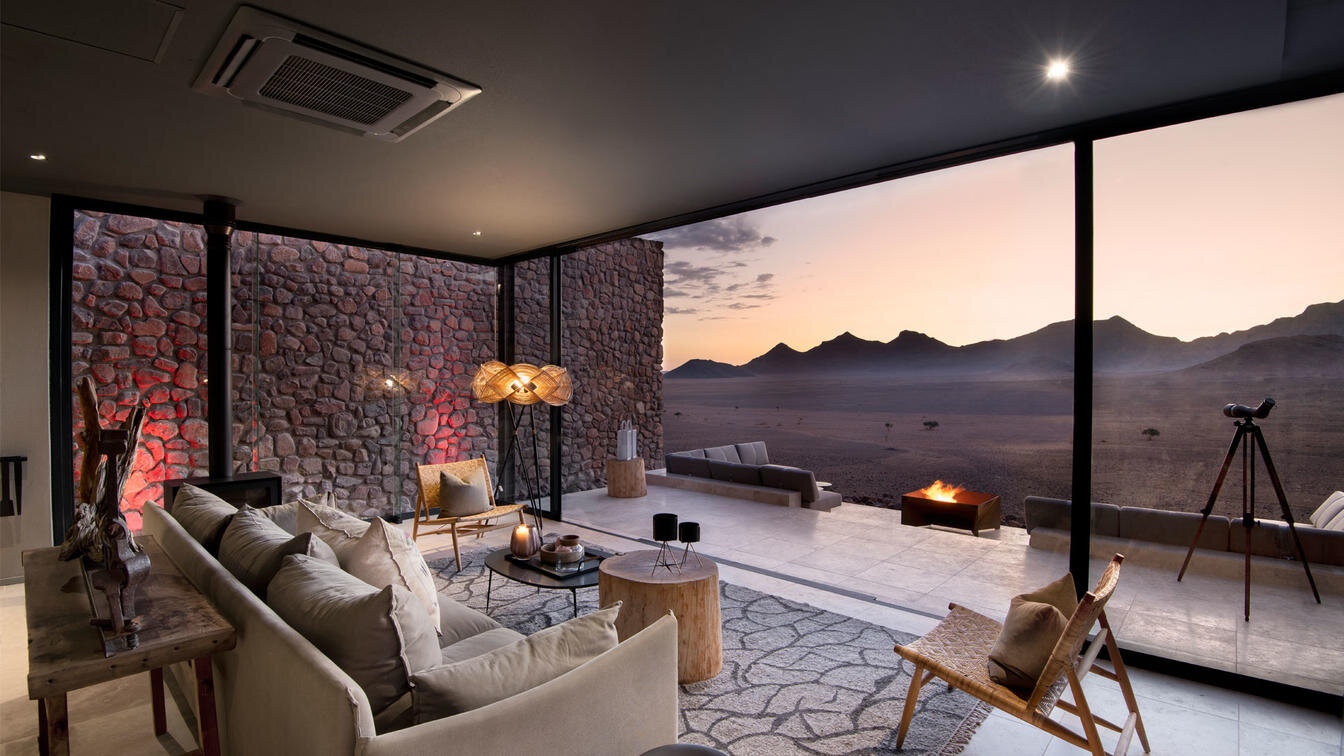
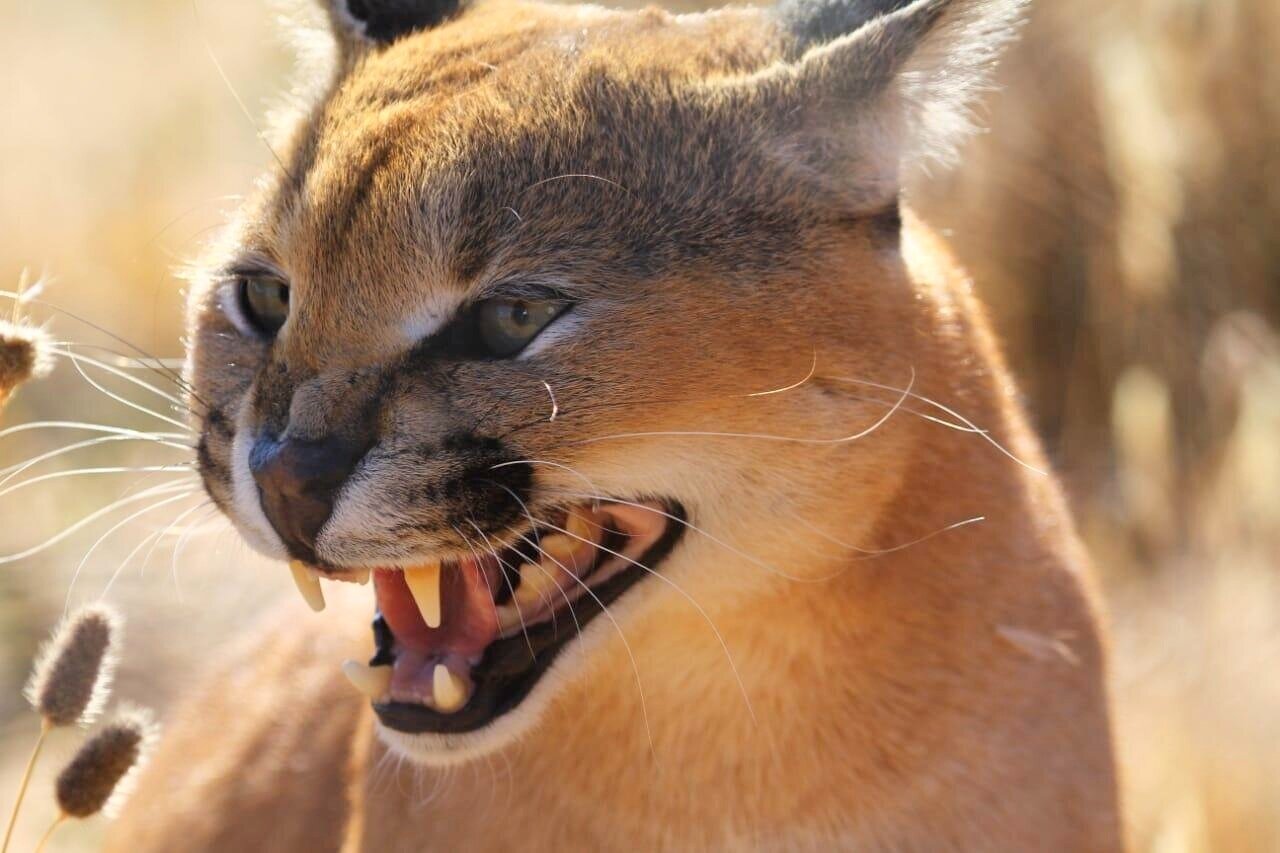
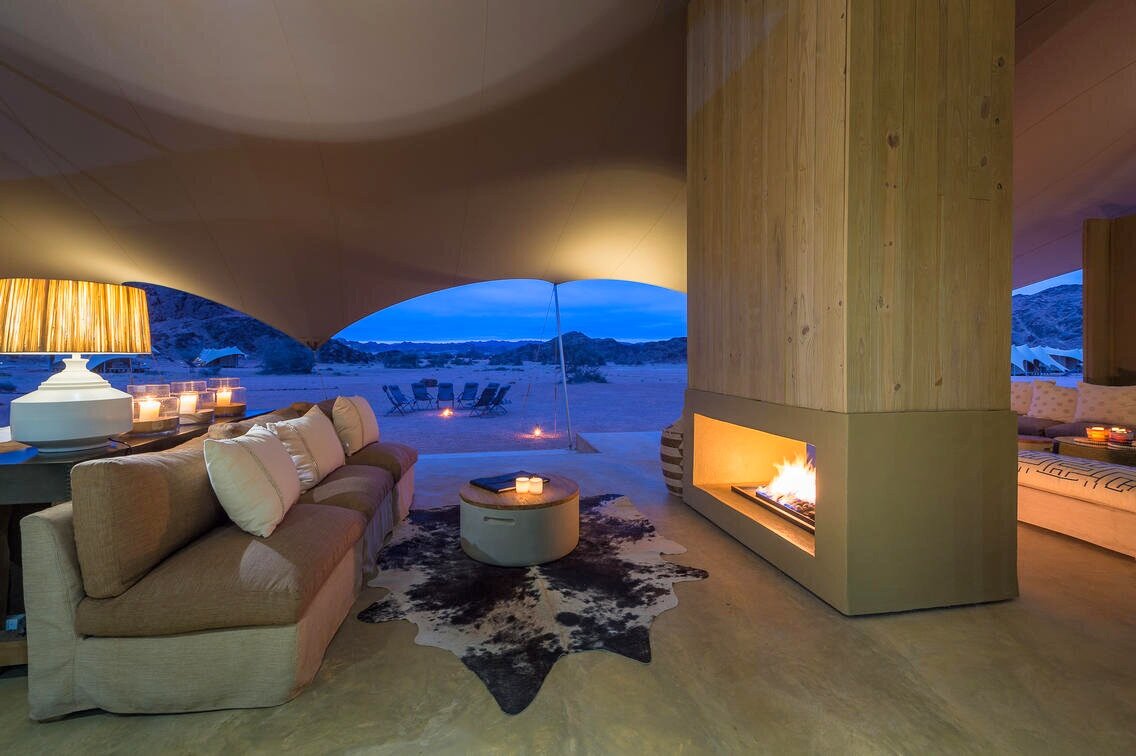
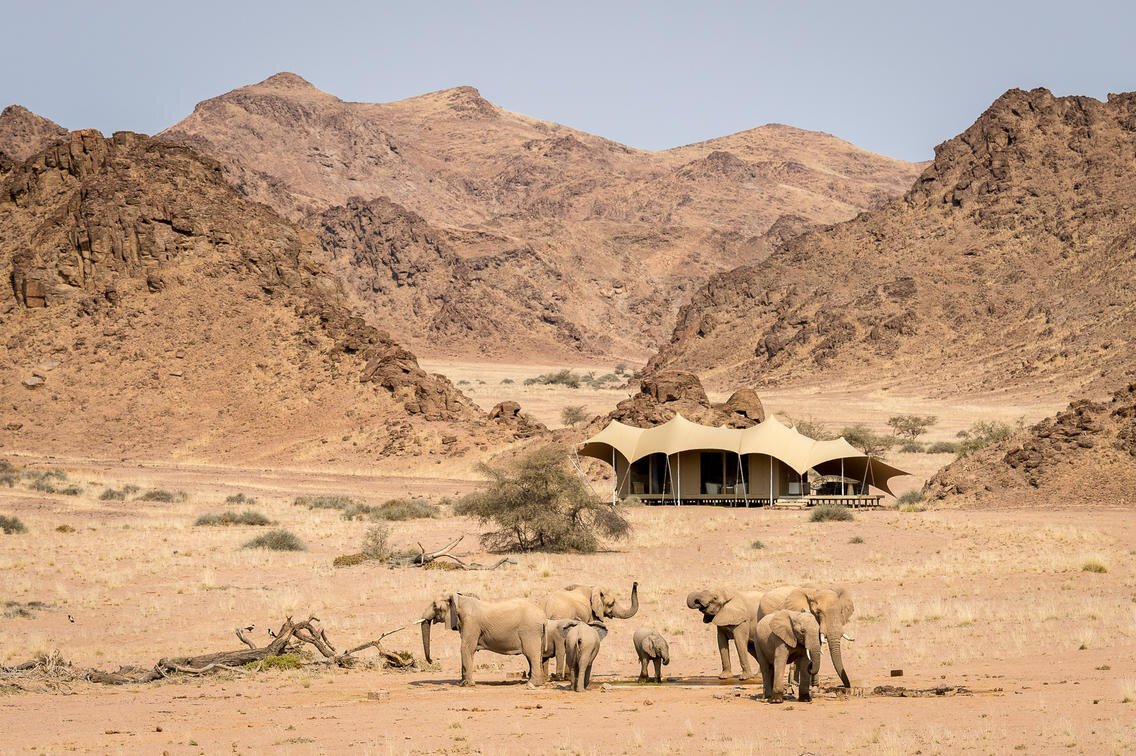
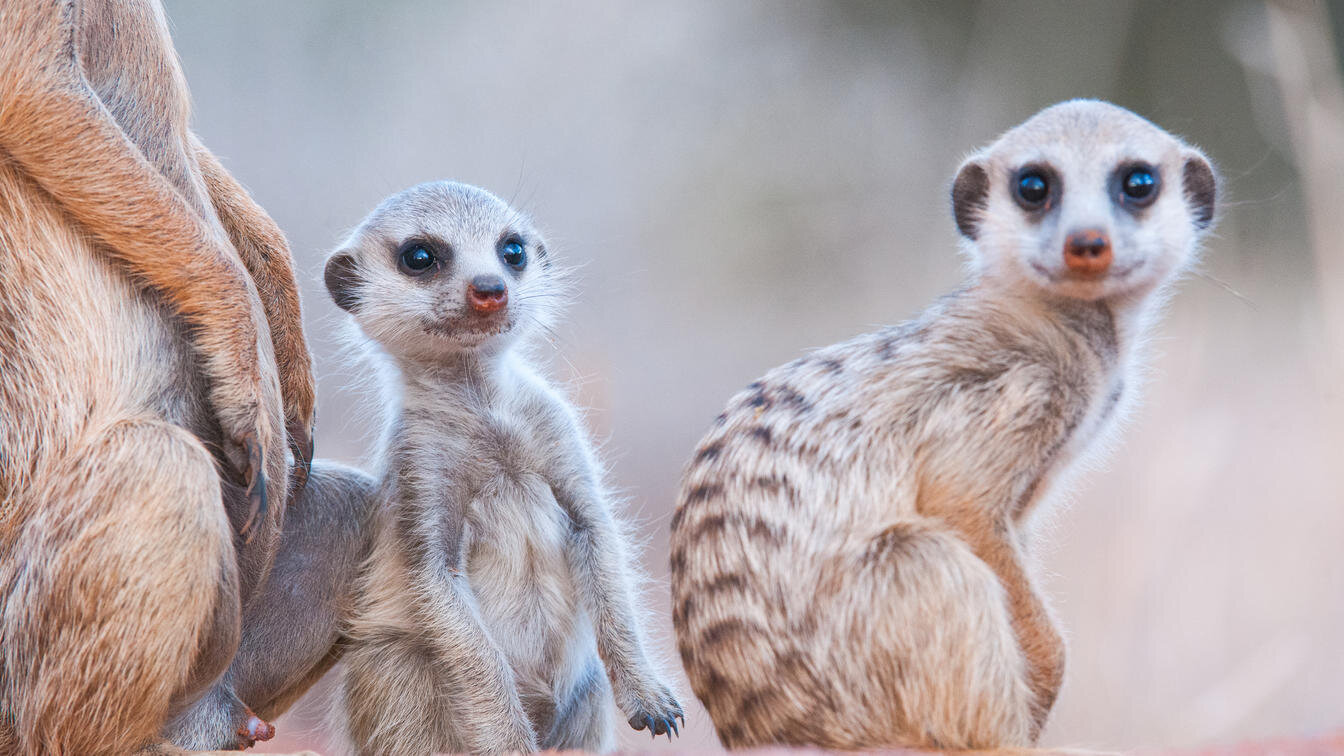
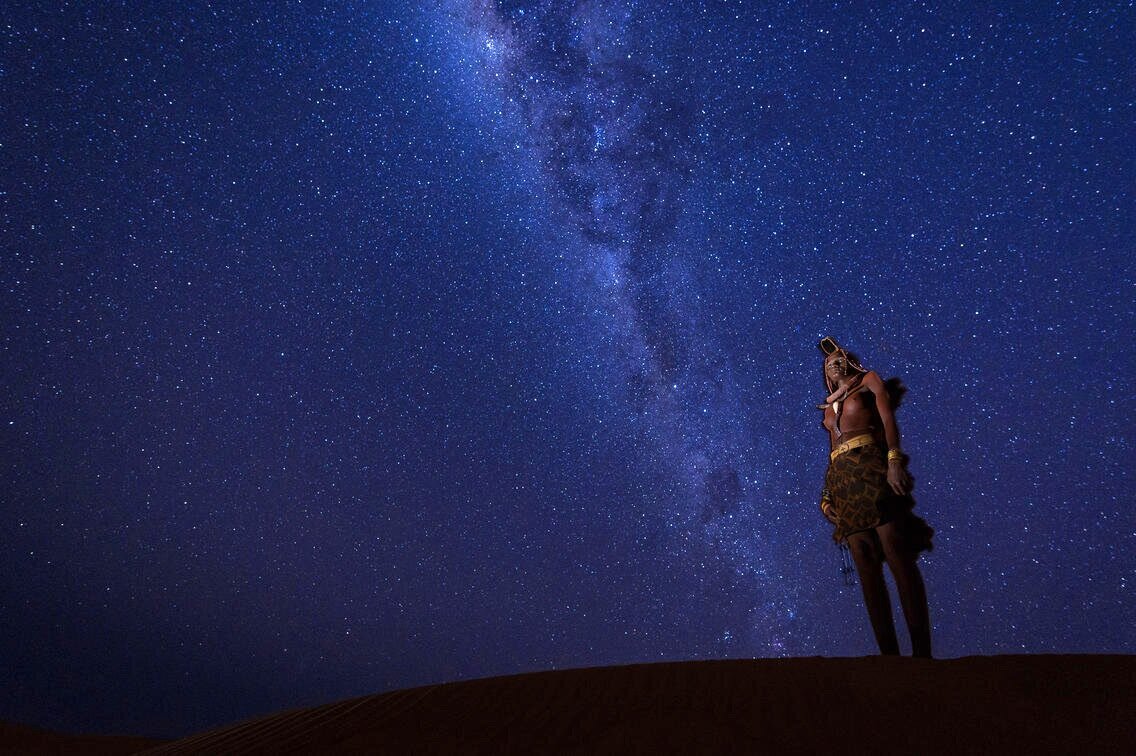
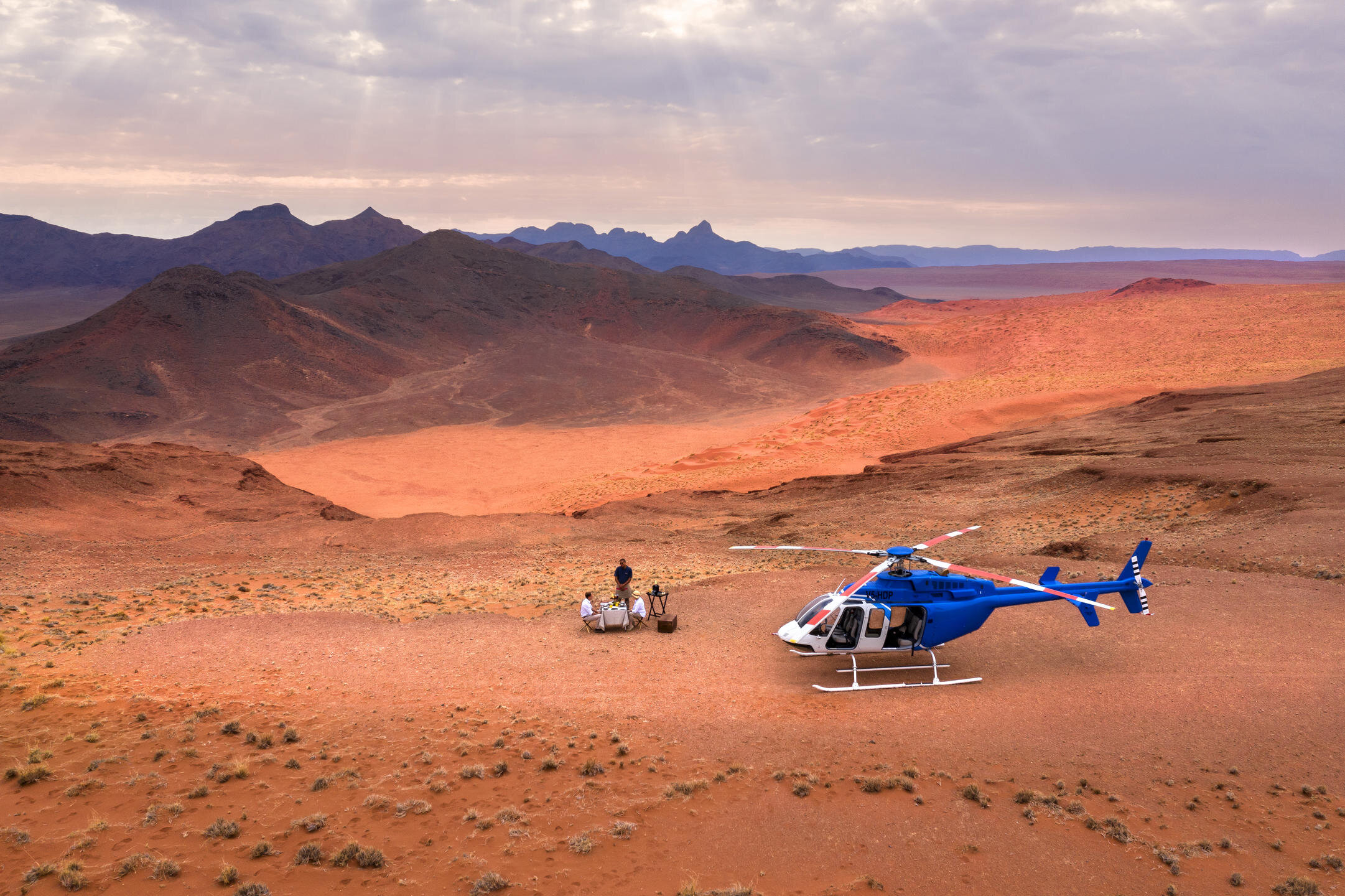
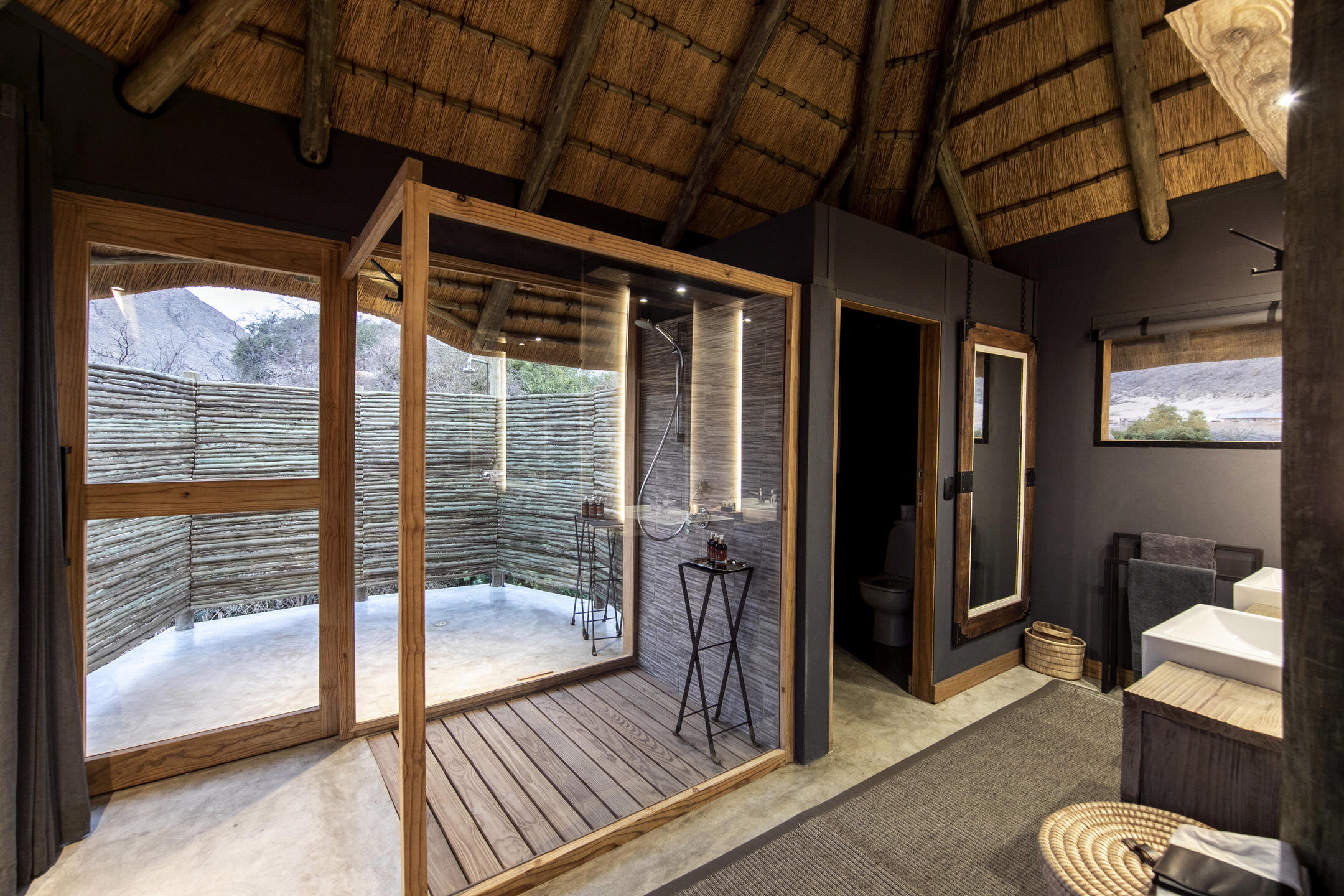


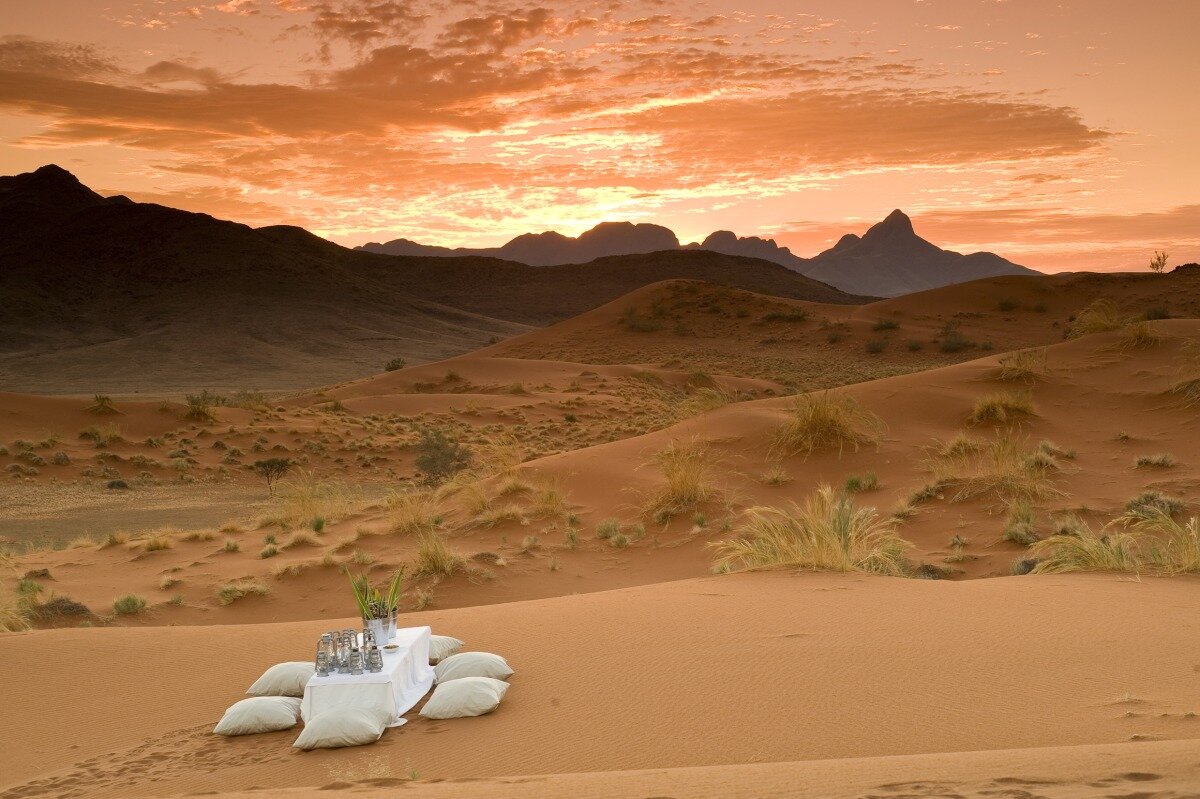

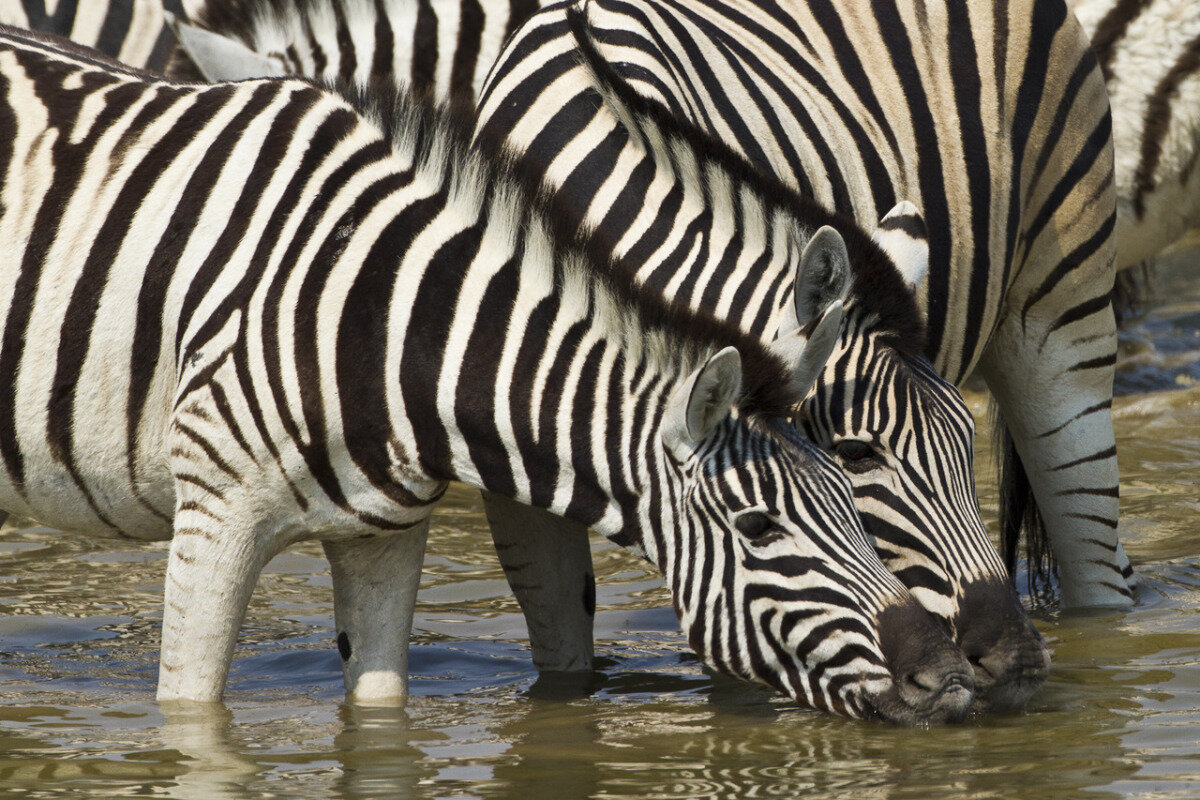


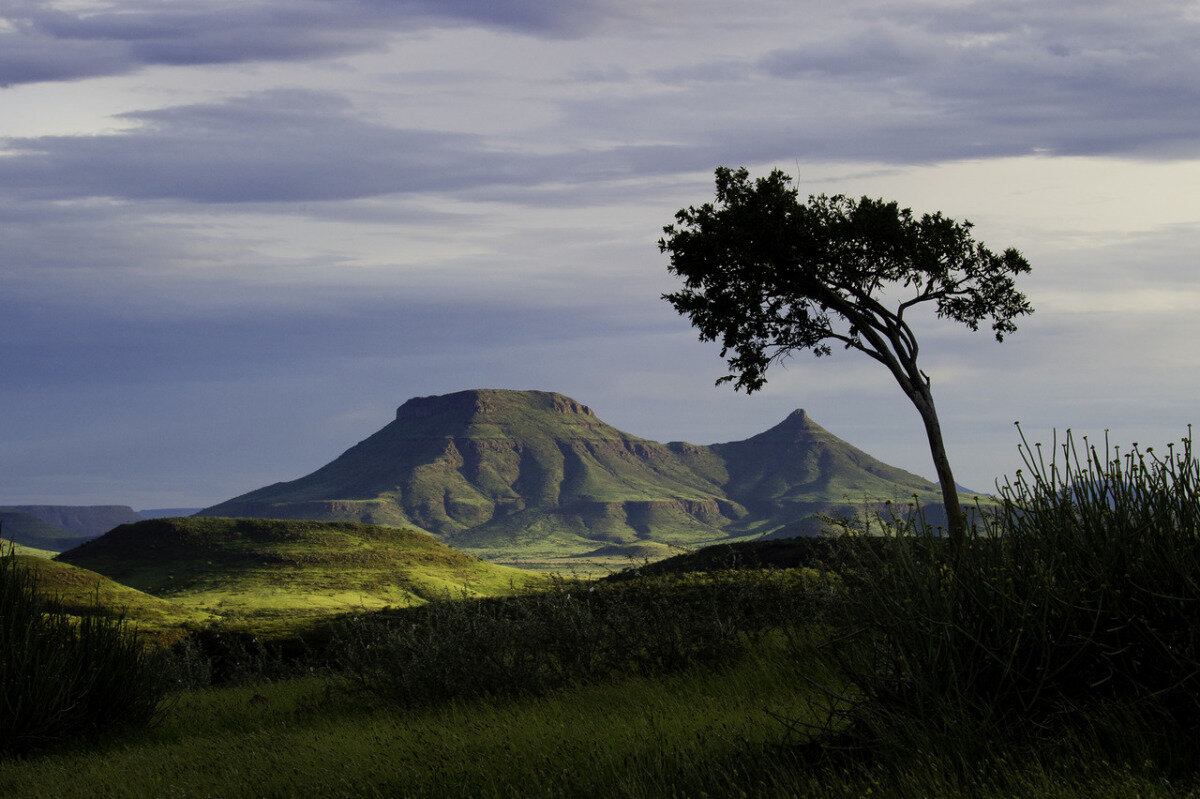

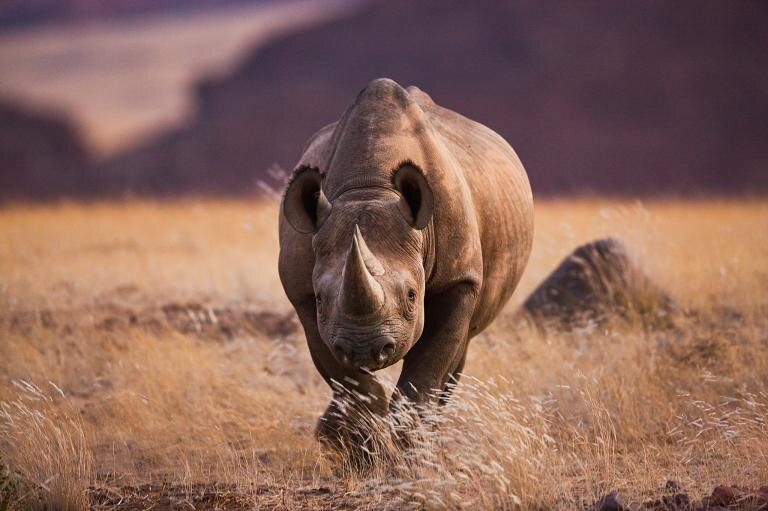
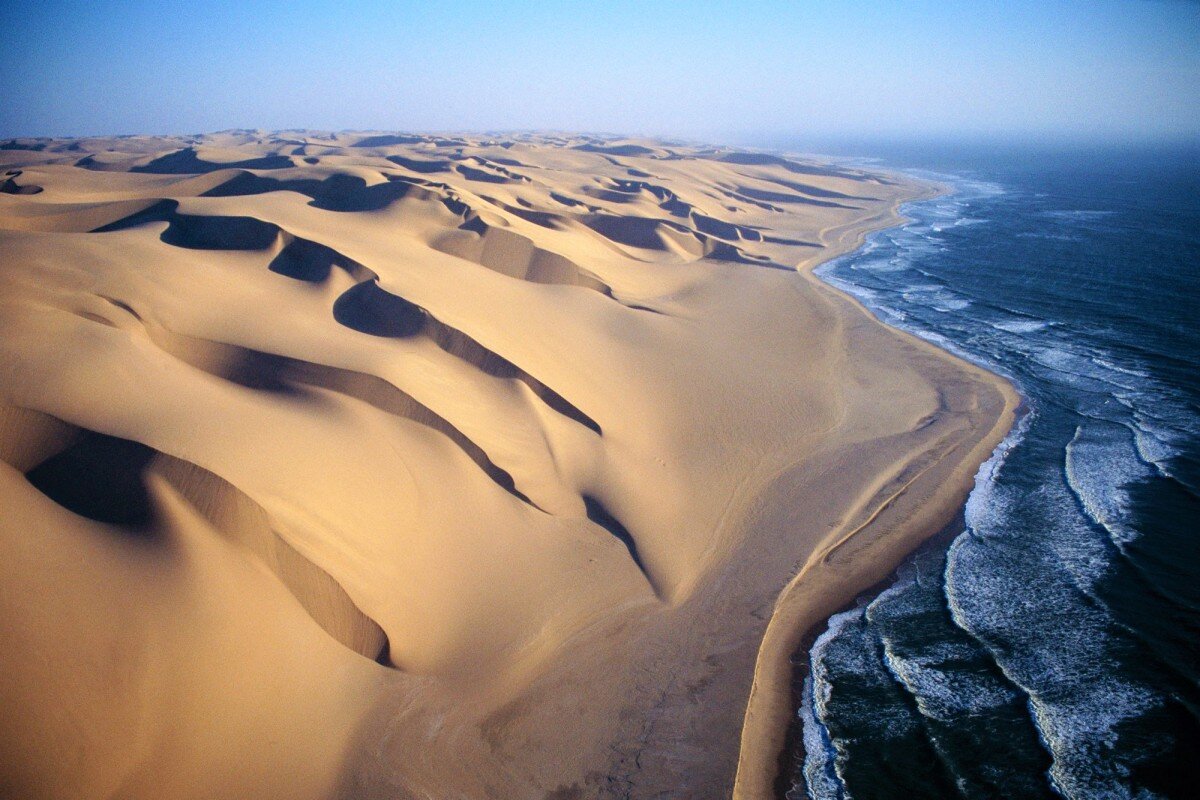
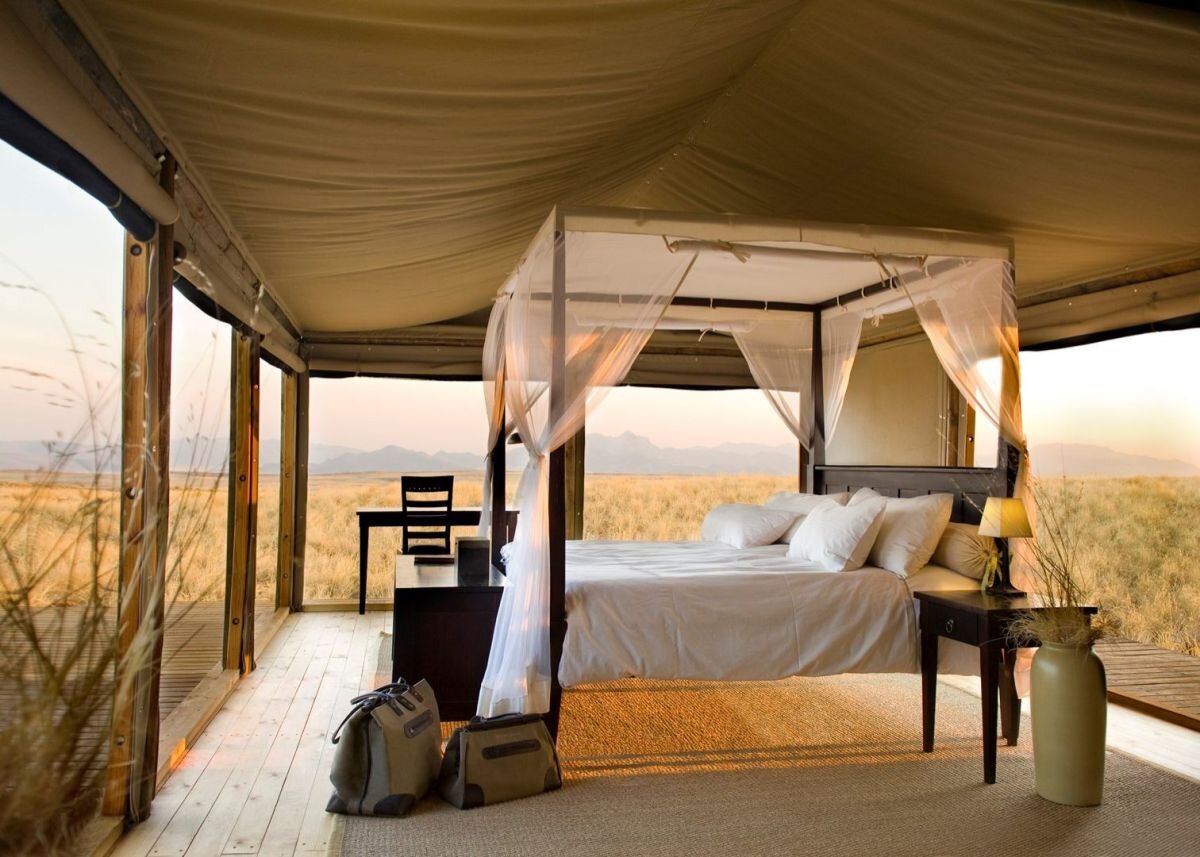

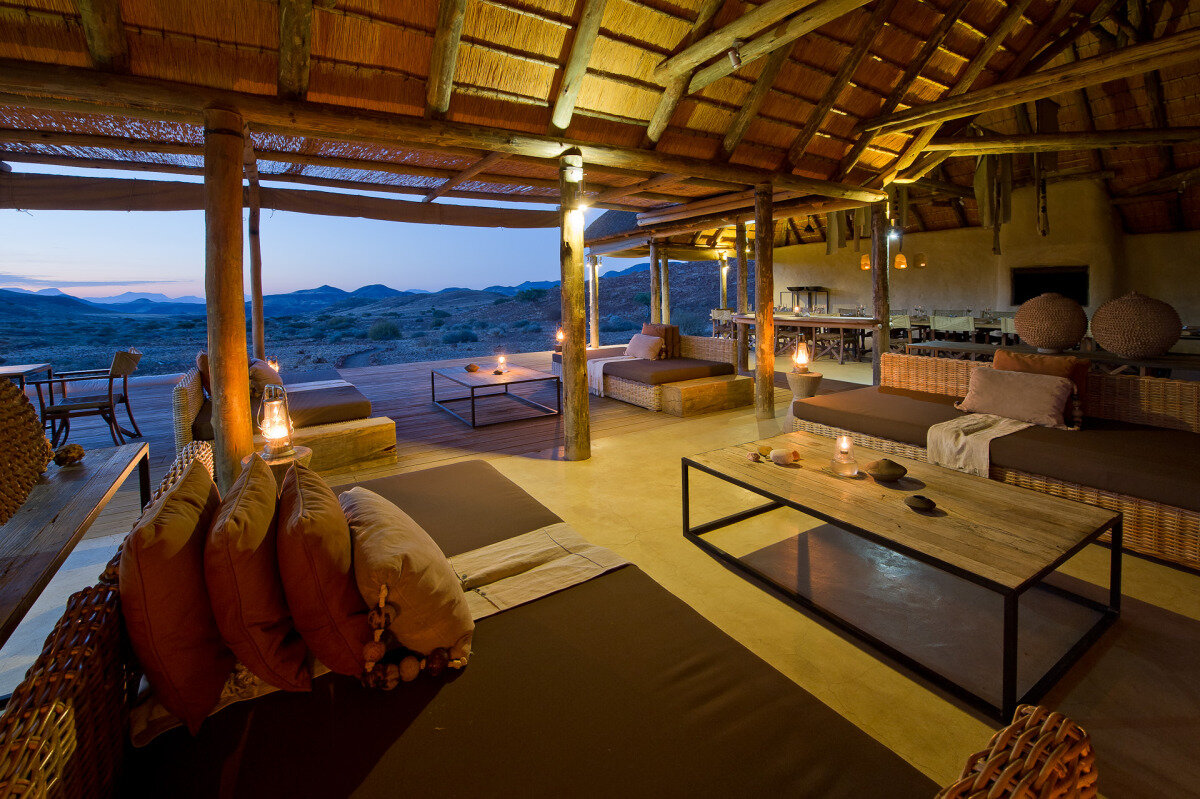

![deadvlei-9[5].jpg](https://images.squarespace-cdn.com/content/v1/600af5c7a3706134b7286c72/1611331679605-BGYZ7TCDO76KHATUADWN/deadvlei-95.jpg)


